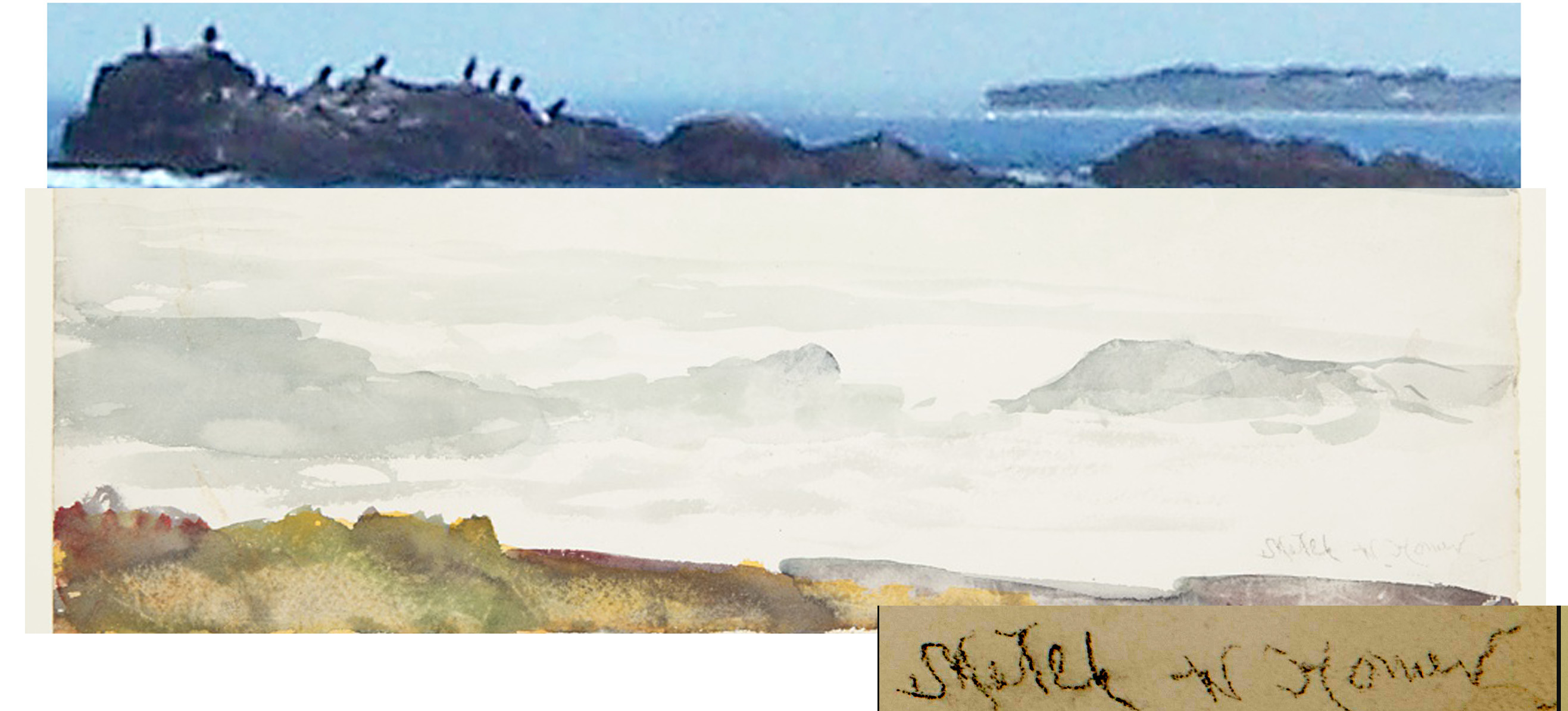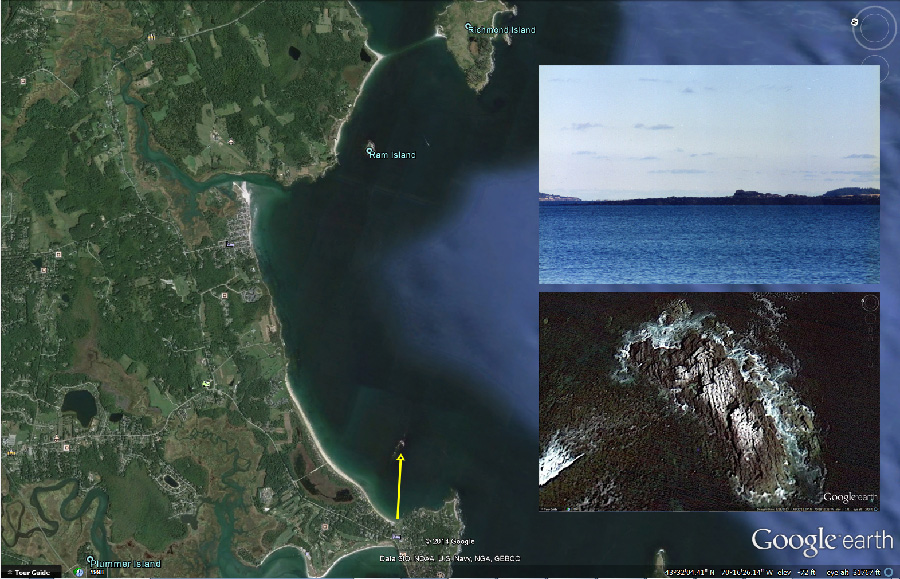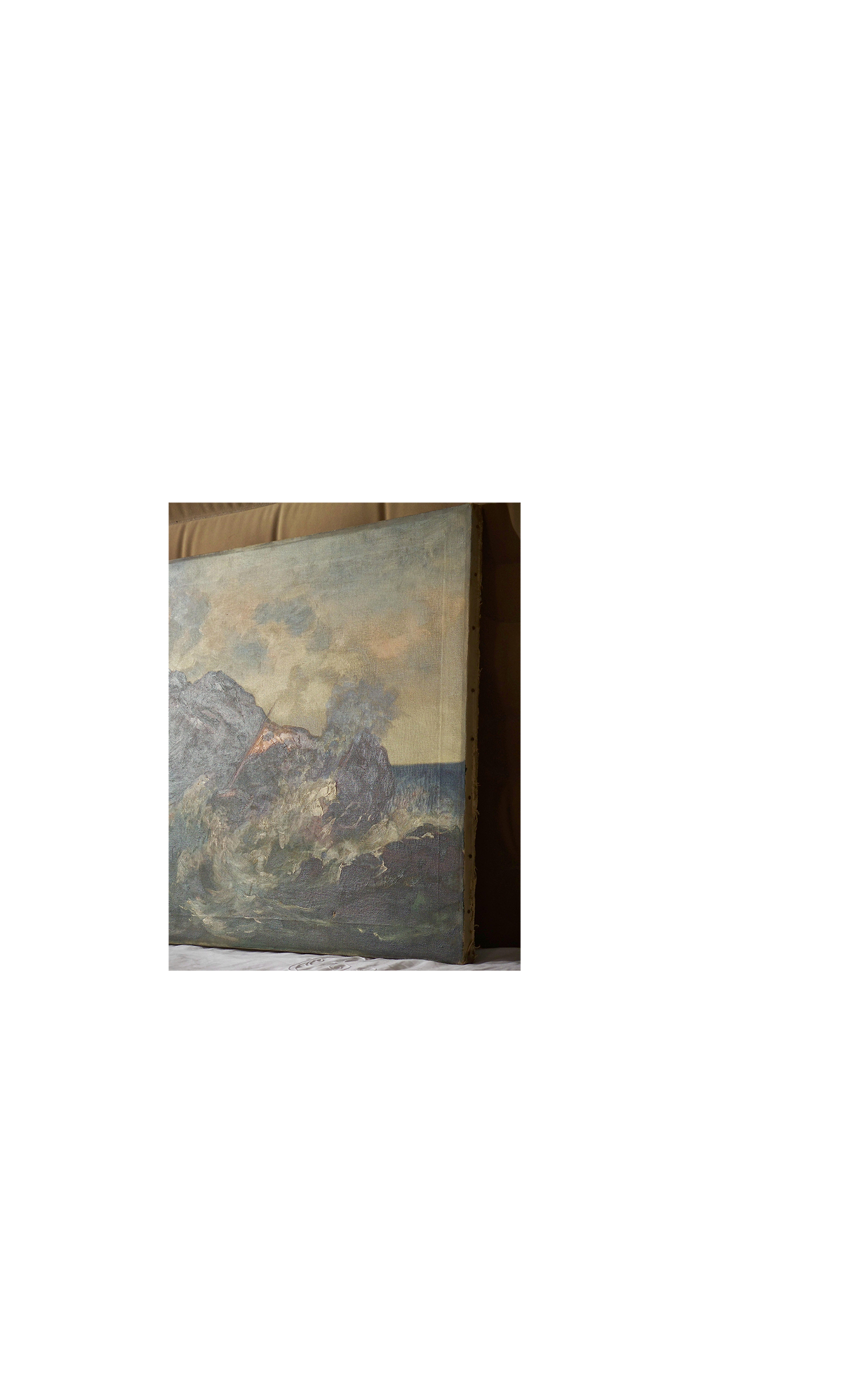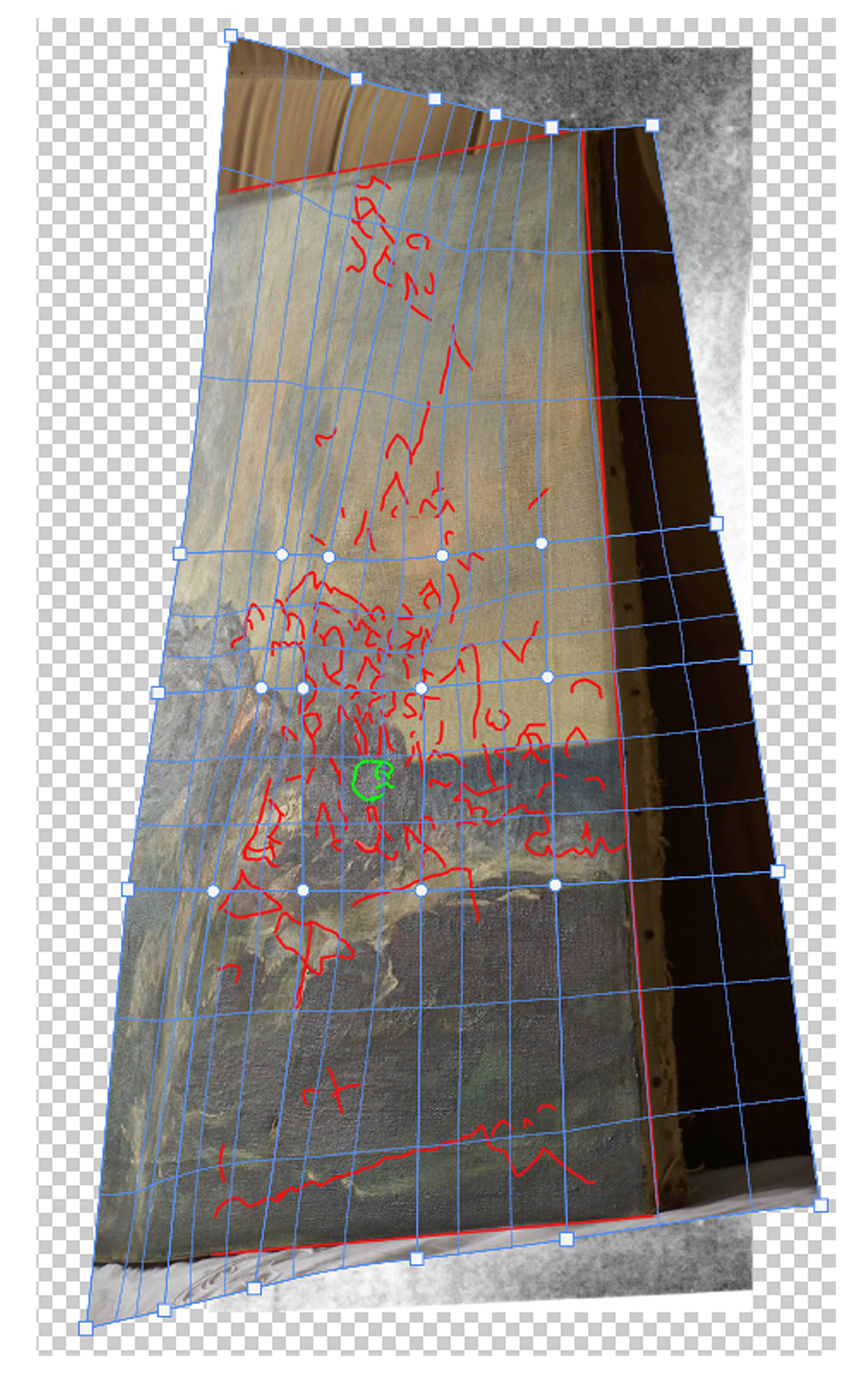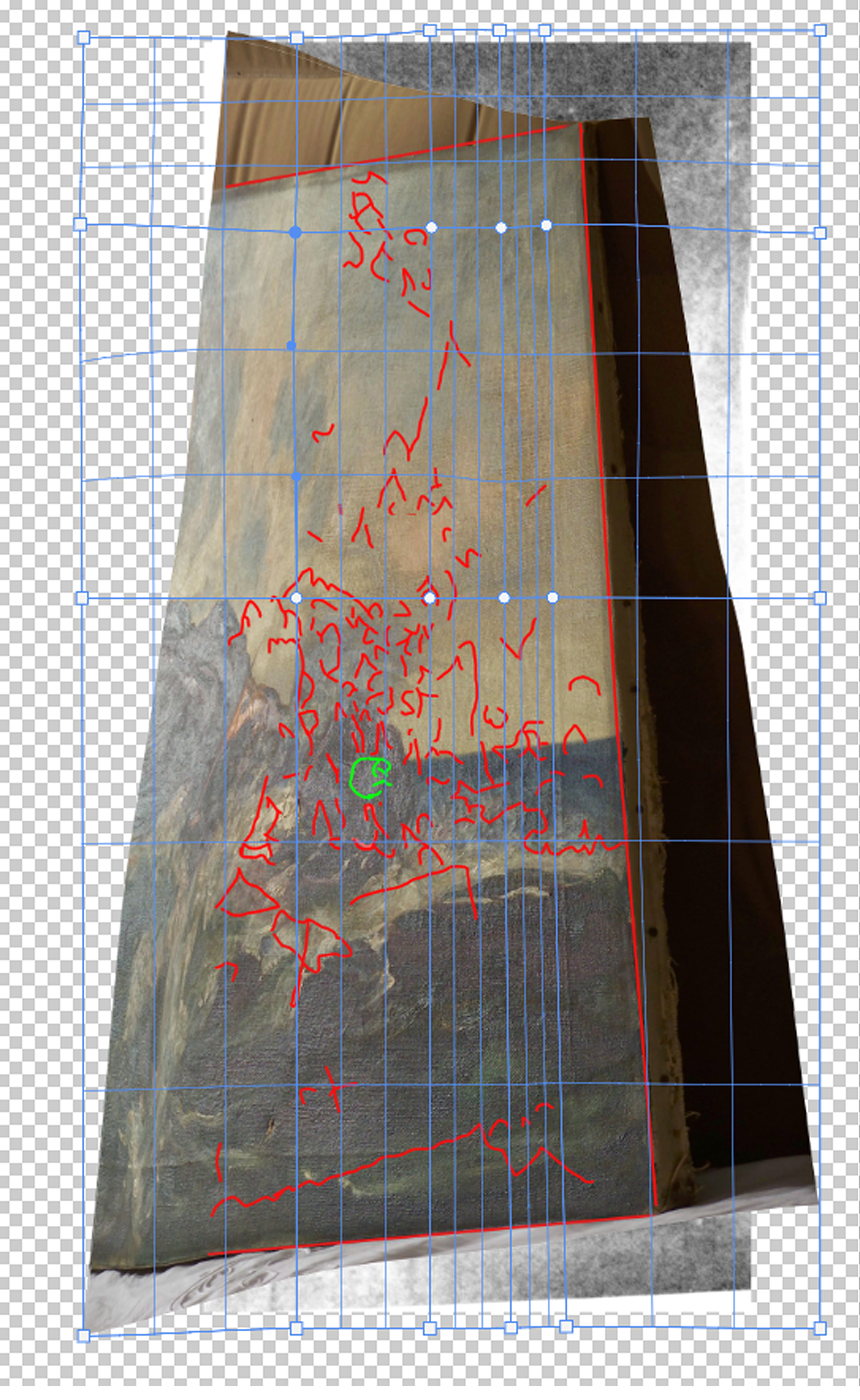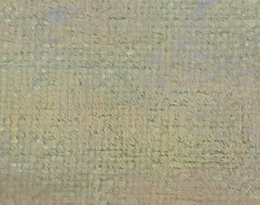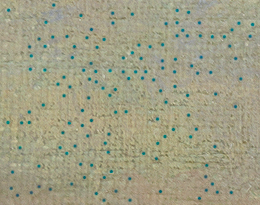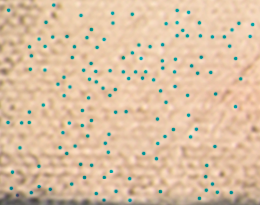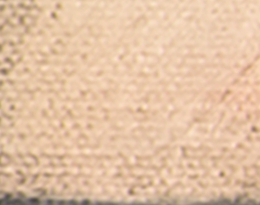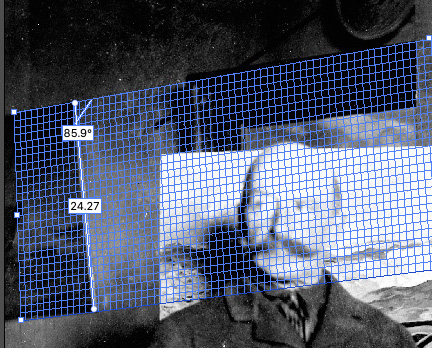
The sections below talk about a seascape that matches the unknown painting hanging over Winslow Homer's right shoulder in a widely distributed photo of him at work on The Gulf Stream, enlargement below. The unidentified painting's height is around 24 inches.
The modern image below shows the right side of a painting with illumination from the left and the light bouncing towards the camera lens. This reproduces the effect of the portrait's fill-flash pot or bounced light. The image was adjusted to match the view camera's lens, slant and angle. While the painting was likely unvarnished at the time of the photo, today the varnish layer is very thin.
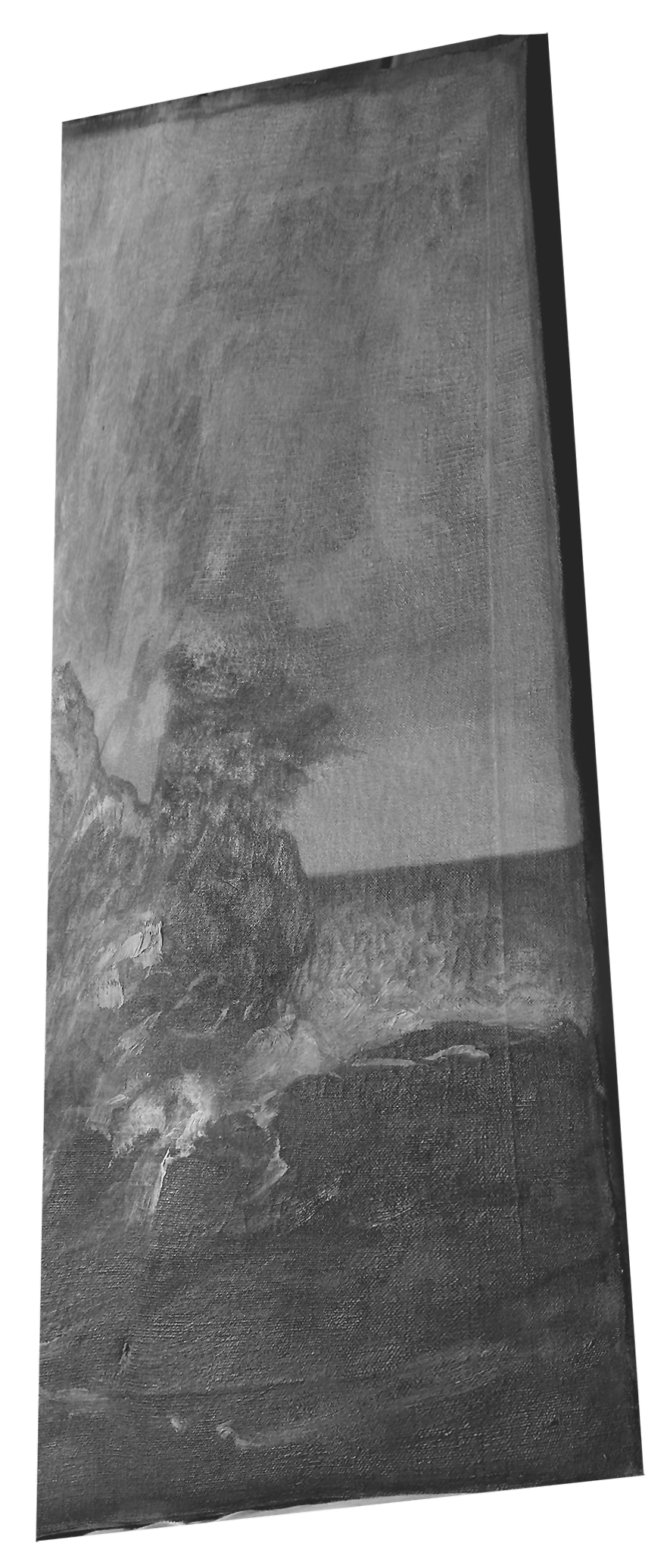
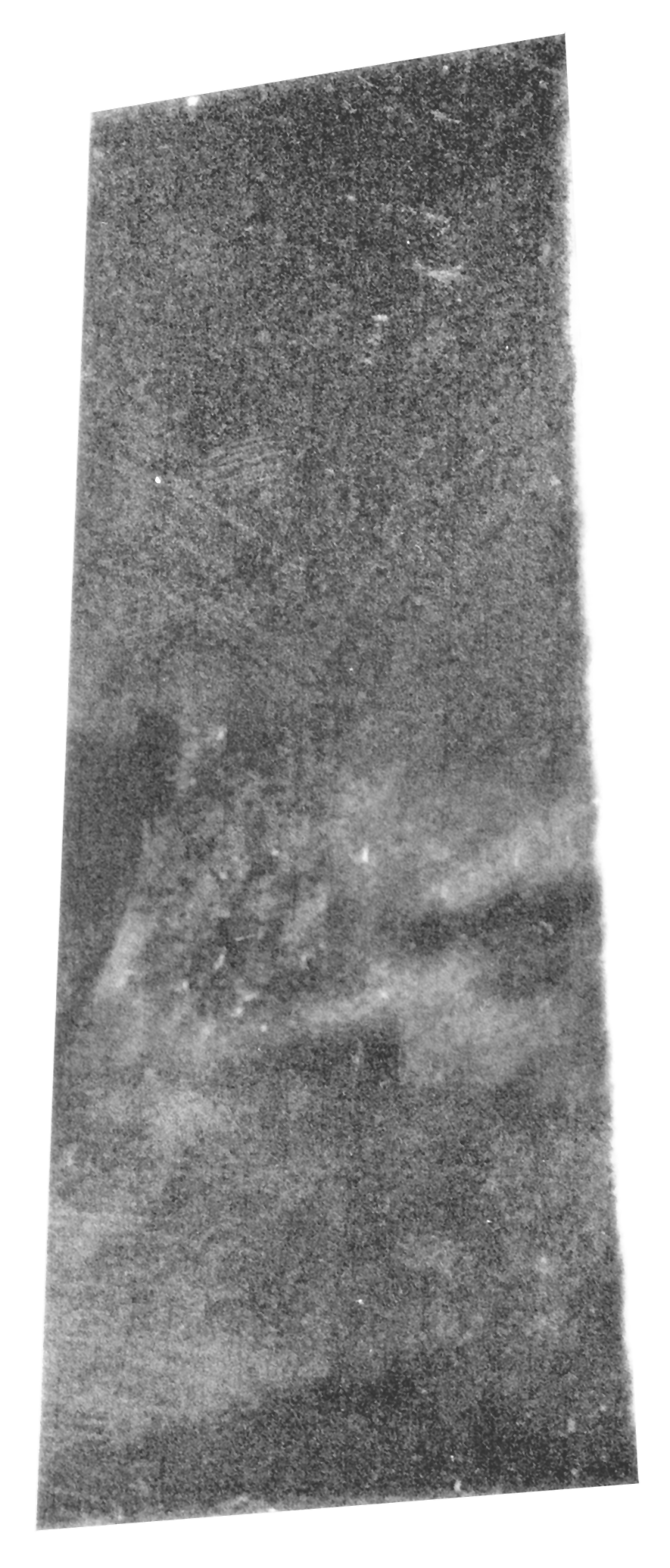
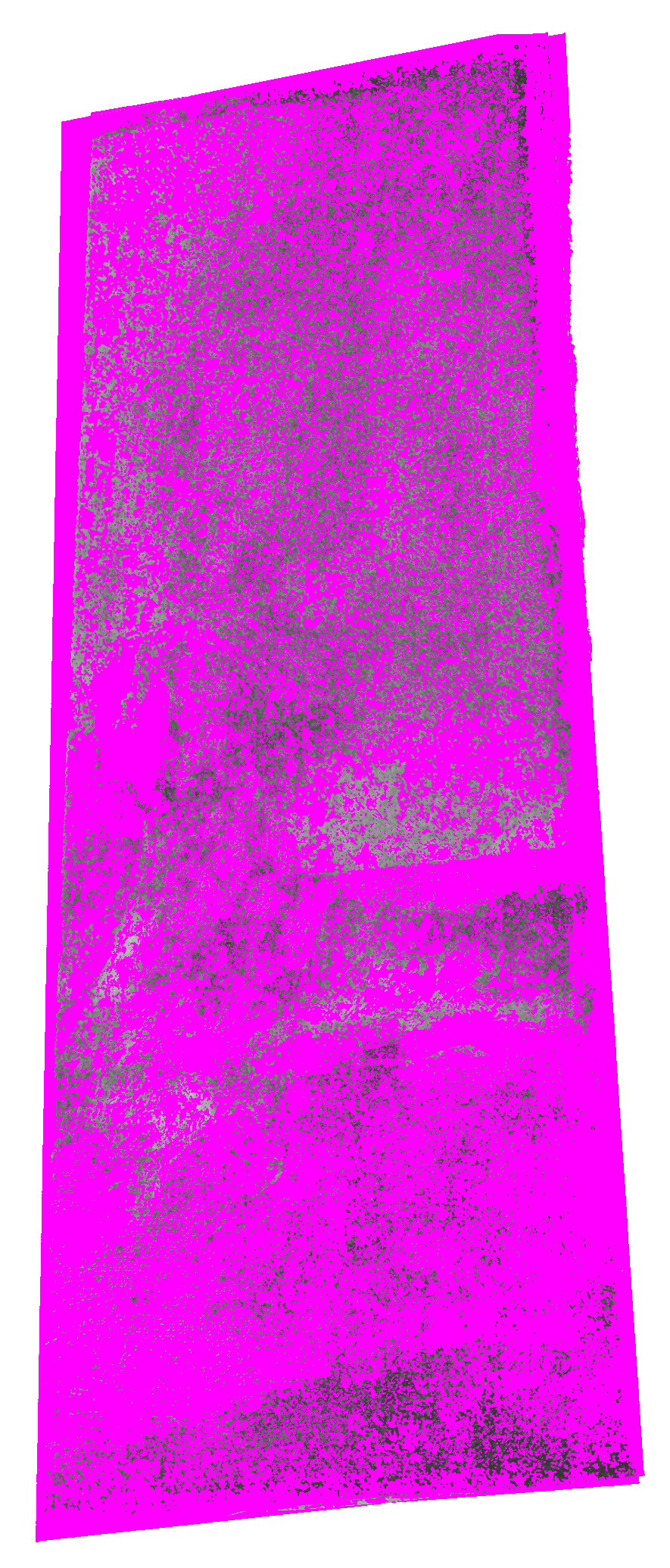
Poster Version
The second image (the "poster" version) was scanned from a poster purchased on Amazon. In the poster, the untraced painting is approximately 6.25 by 3.5 inches. It was scanned at 1200 dpi. While the poster has lines from the scanning process and the printer rollers, it is nonetheless an excellent "source of truth."
The comparisons in the third images above and below were generated using Resemble.js, a framework designed to "analyze and compare images with JavaScript."
Both versions and the modern image have curve adjustments and have been despeckled.
While there are false positives, the matches of rock and spray (displayed in the areas that are not magenta) show significant similarities. See Section 4 for larger versions.

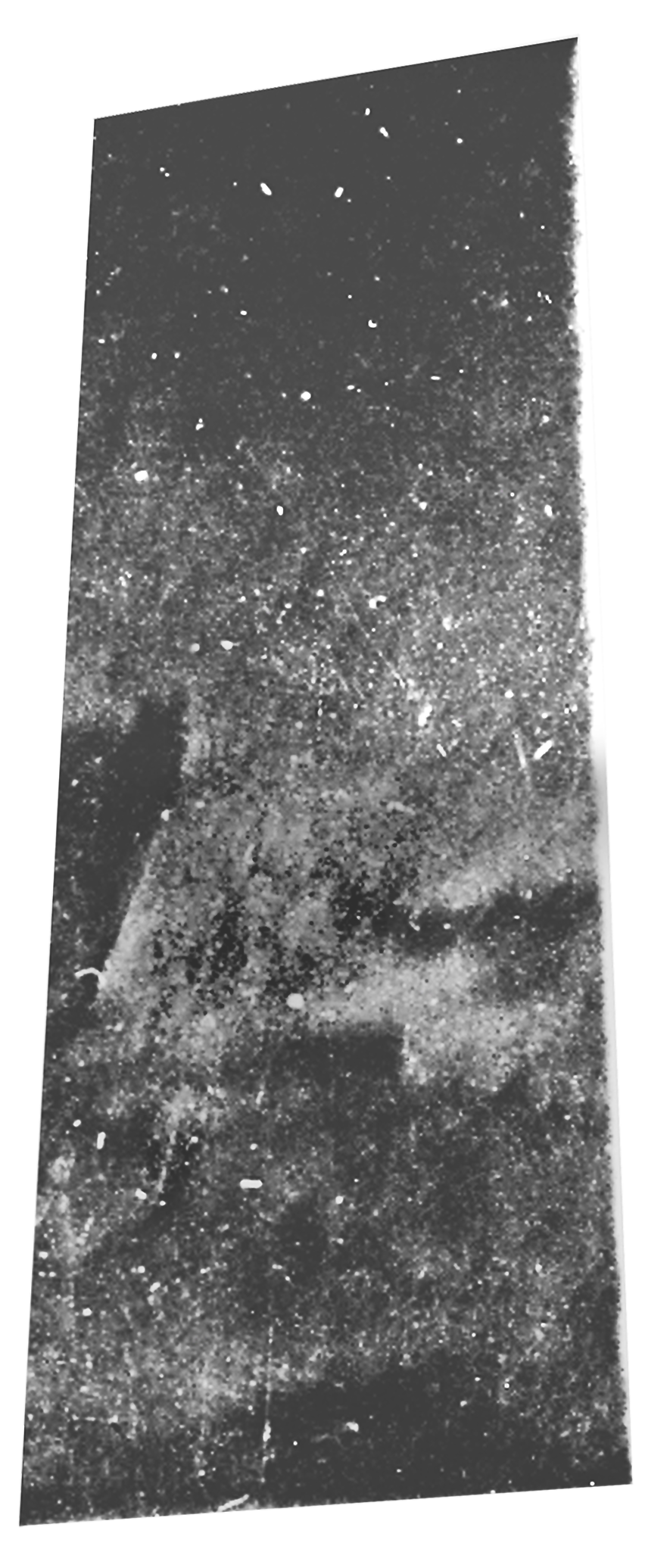
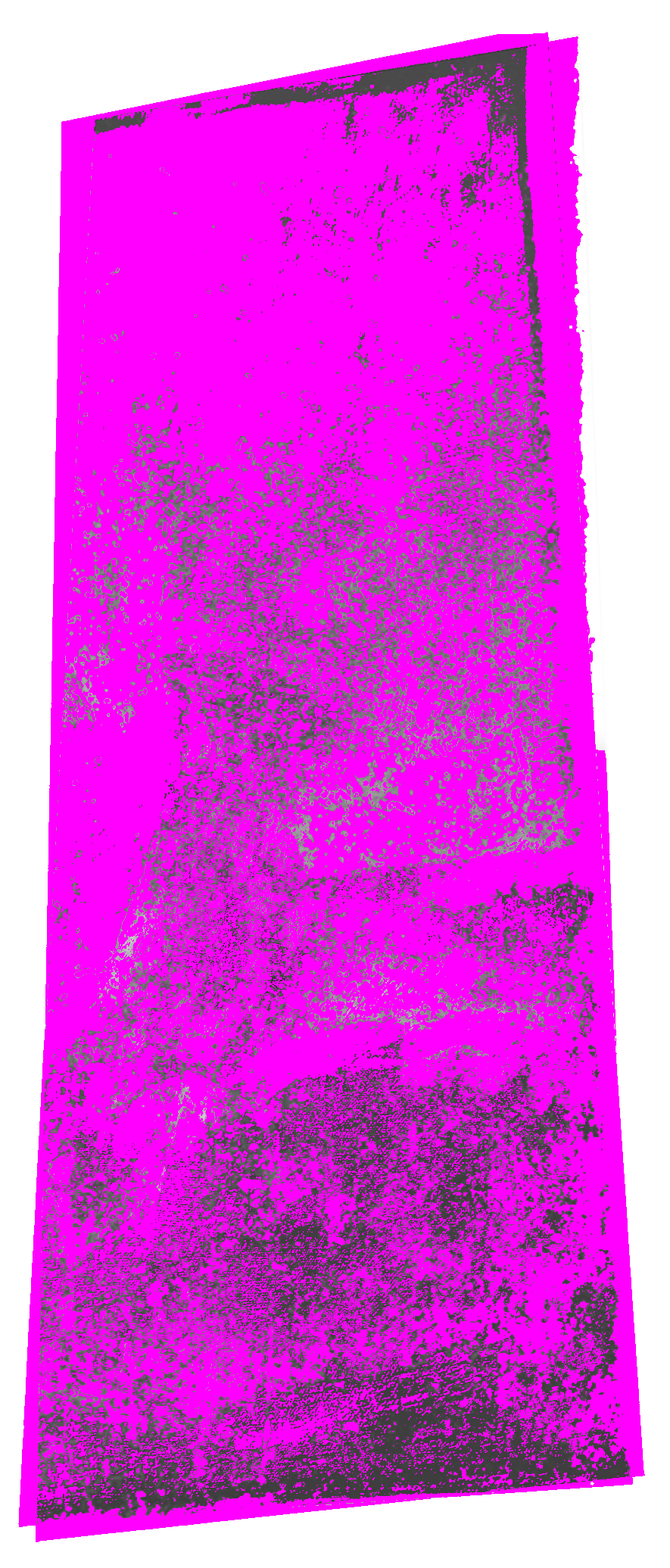
Press Release Version
The second image (the "press release" version) was included in a press kit put out by the Portland Museum of Art. Although the kit is no longer available, it has been archived here (Google Drive).
The kit included a high resolution tif file called Winslow Homer and the Gulf Stream, archived here (Google Drive). While the press release version is oversharpened and has too much contrast, it extends farther left than the poster version. In the press release version, a man can be seen standing in the surf. See Section 8 for a comparison of the man and a figure found in infrared images of the painting. A similar version that includes the figure is available from Getty Images.Paint samples from the seascape are consistent with those dating from the late 19th and early 20th Centuries, and some are known to have been used by Homer. A material report is available here.
The unidentified painting appears to be in the 24-inch range (Section 3), as is this one.
The Mean Squared Error (MSE) and Structural Similarity Index (SSIM) images in Section 5 indicate matches that are not likely to be random.
Section 9 shows computational comparisons of marks made by a raking tool.
Section 10, Style Comparisons, has more than 30 comparisons with known works.
Section 12 discusses the possibility that the painting is a portion of an untraced picture called Low Tide, Long Branch (referenced on pages 81-82 of Winslow Homer by Cikovsky and Kelly). Low Tide was described by an art critic as "a picture which covers twelve square feet of canvas at the least." Less than half of the canvas has been accounted for. Canvas weave comparisons indicate potential matches with accepted descendants of Low Tide.
Downloadable project assets are available here.
This subject might be an interesting article, paper or even an attention-getting "is it or isn't it?" type exhibit. Please contact info@saper.us
The seascape resembles the Shooting Rock formation off Prout's Neck.

It is possible the formation inspired this sketch in the Cooper Hewitt collection titled Ocean Seen From a Cliff, Prout's Neck. The jagged outlines are not necessarily consistent with a wave, particularly the hook shape to the right. This could be a rock formation. The perspective, looking out from a cliff, would indicate the formation is some distance from the shore. The comparison image has been adjusted to bring out the shape and the inscription, which might include the word "sketch."
Page 454 of American Paintings: A Catalogue of the Collection of the Metropolitan Museum of Art, Volume 2 includes the detail below:
"An unfinished study of rocks and breaking surf appears on the upper part of the back of the panel. The predominance of pink colors suggests sunrise or sunset. The bursts of spray and foam are characteristic of the paintings of the sea that Homer made after he settled in Prout's Neck in 1884. The marine paintings of that period, however, appear to have been painted exclusively on white prepared grounds. This study is made directly on the red-brown panel, a ground that gives more weight and substance. Neither of the studies, which date from two different periods of Homer's life, was ever intended for public exhibition. More likely, they served as points of reference for him."
A color image of the oil sketch appears to show a stretch of water behind a rock formation and possibly land beyond.

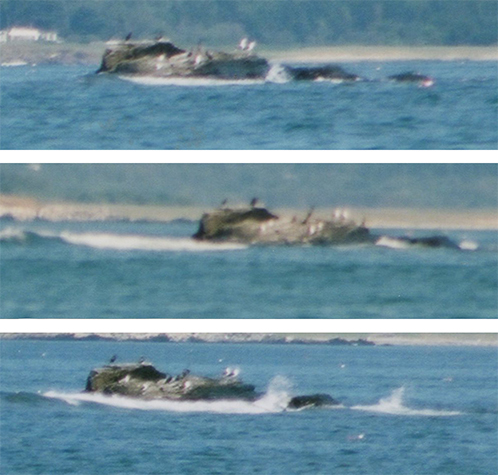

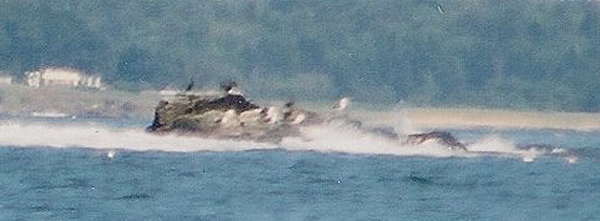
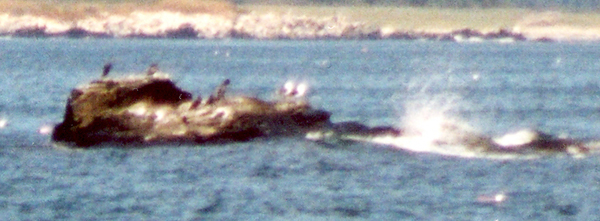
William Howe Downes in his The Life and Works of Winslow Homer shares several letters between Homer and M. O'Brien and Sons, an art gallery in Chicago, but none after 1902. As persistent as the gallery was, it is unlikely the letters simply stopped.
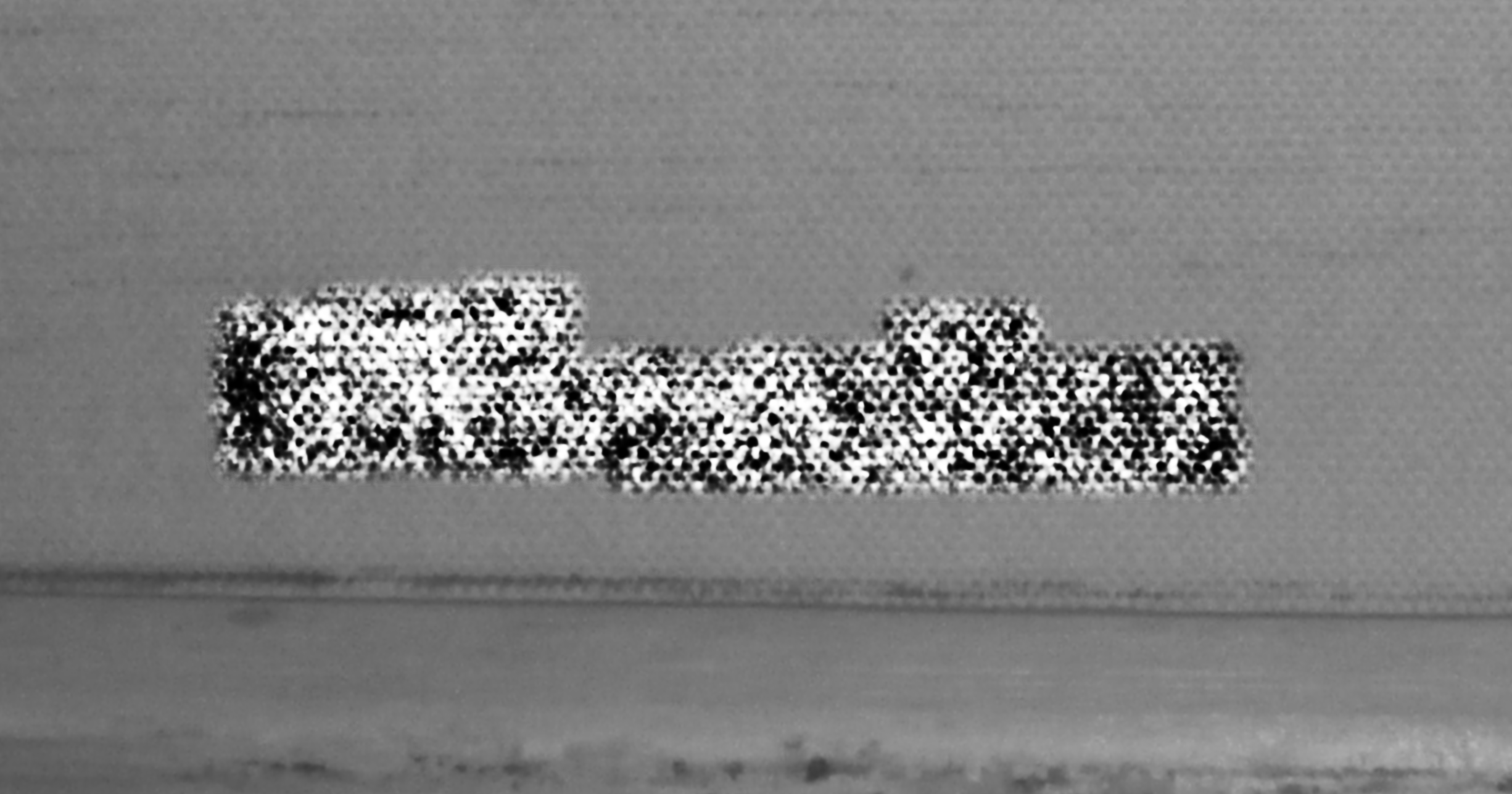
Enhanced markings on the canvas back, to the upper right, appear in an IR image taken with a 950 NM filter. These could say M. O'Brien and Sons.
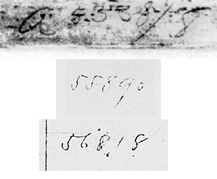
Enhanced markings on Shooting Rock stretcher compared to M. O'Brien and Sons inventory entries from Archives of American Art Reels 4180-4181.
Known for his sense of humor, Homer might have sent O'Brien this reworked seascape (discussed in Section 6) as a joke. The quote below, from a letter he sent in 1905, shows at this time he was able to part with an artwork without compensation. Playing on O'Brien's provincial perspective might also have been his "own business."
I have kept interested in work. Quite outside of my trade — which I think very little of — as it's made up of all honor & no profit. But I am all right now for the balance of my life — I am & happy with lots of money (how I got it is my own business).

In the seascape, a broken boat on the reef resmbles the skiff in Homer's Sailing by Moonlight and a drawing at the Cooper Hewitt called Sailing Boats, 1895–96.
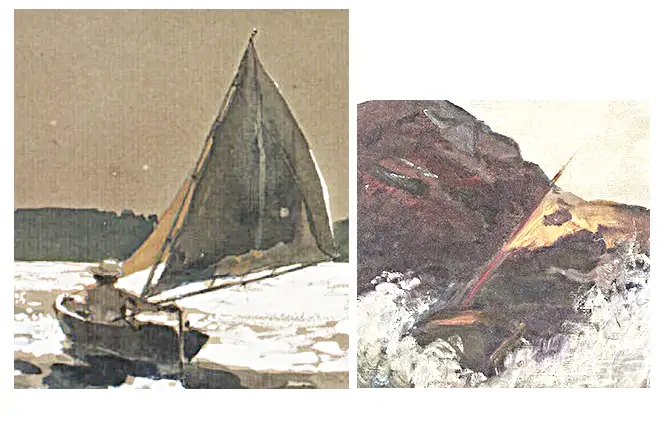
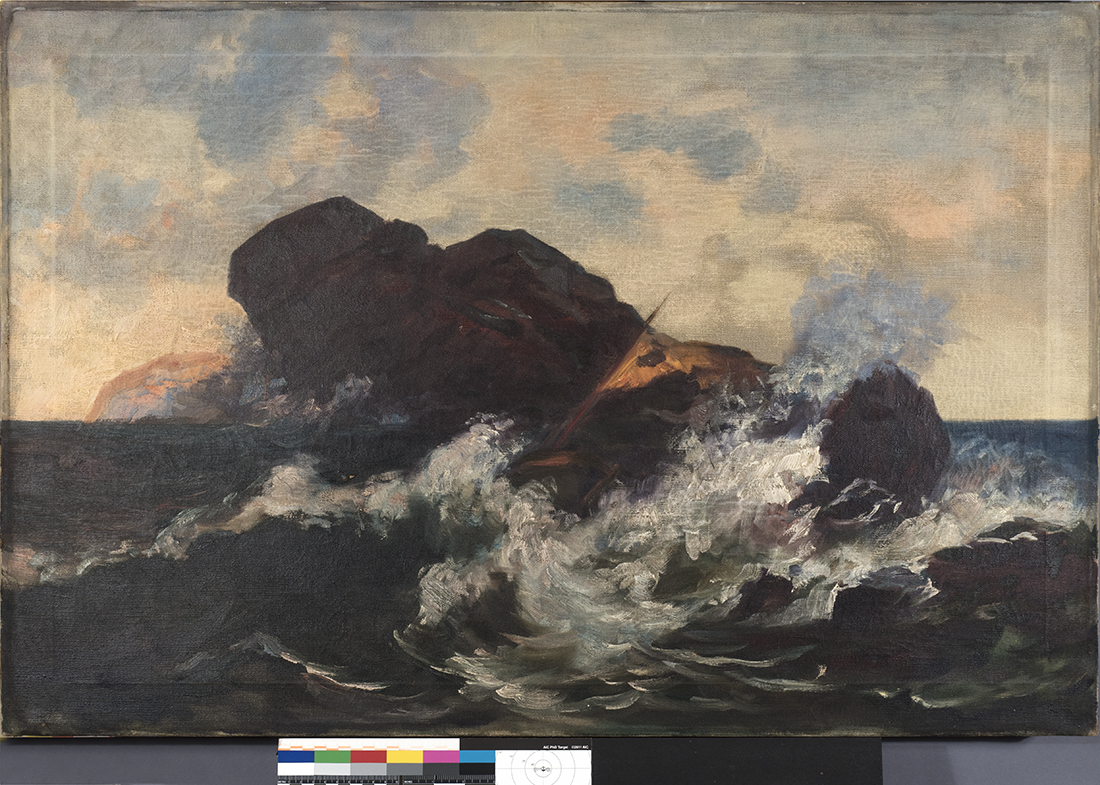
Larger Image One (From 8 x 10 Transparency)
Larger Image Two (From Studio-Quality Digital Camera)
The seascape measures 24.25 by 36 inches.
Many people, including experts, have commented on how different the painting looks in person. This is because the painting has not been restored and badly needs cleaning, making it difficult to photograph. A proper varnishing would greatly improve the appearance.
While the general subject does not match Homer's typical work (a rock formation surrounded by water) there are numerous areas that match Homer's technique (see Section 10).
It is possible the painting was a studio study or a reference. For example, the canvas sail in this painting resembles the sail on the deck in The Gulf Stream, which was not present at the time of the photo.
This rotated Google Earth screenshot shows Shooting Rock to the east from Prout's Neck with Richmond Island farther to the east.
In 1899 or 1900, the art critic William Howe Downes visited Homer in his studio. He brought a photographer who took what is now a widely distributed photo of Homer at work on The Gulf Stream.
The infographic was created with the Photoshop Vanishing Point Filter. Extending the vectors of the unidentified painting to the right, the Vanishing Point Filter indicates the edge of the unknown painting is around 24.25 inches when the edge of Hound and Hunter is entered as 27.9 inches.
Adjusting for Foreshortening
The height of Hound and Hunter is 28.25 inches. In the photo it is leaning away from the wall. The angle between the shadow and the painting's edge is 2.2°. The foreshortening equation uses half of 2.2° to determine the perceived height.
Foreshortening Equation: ((90° - 1.1°) / 90°) * 28.25 inches = 27.9
inches.
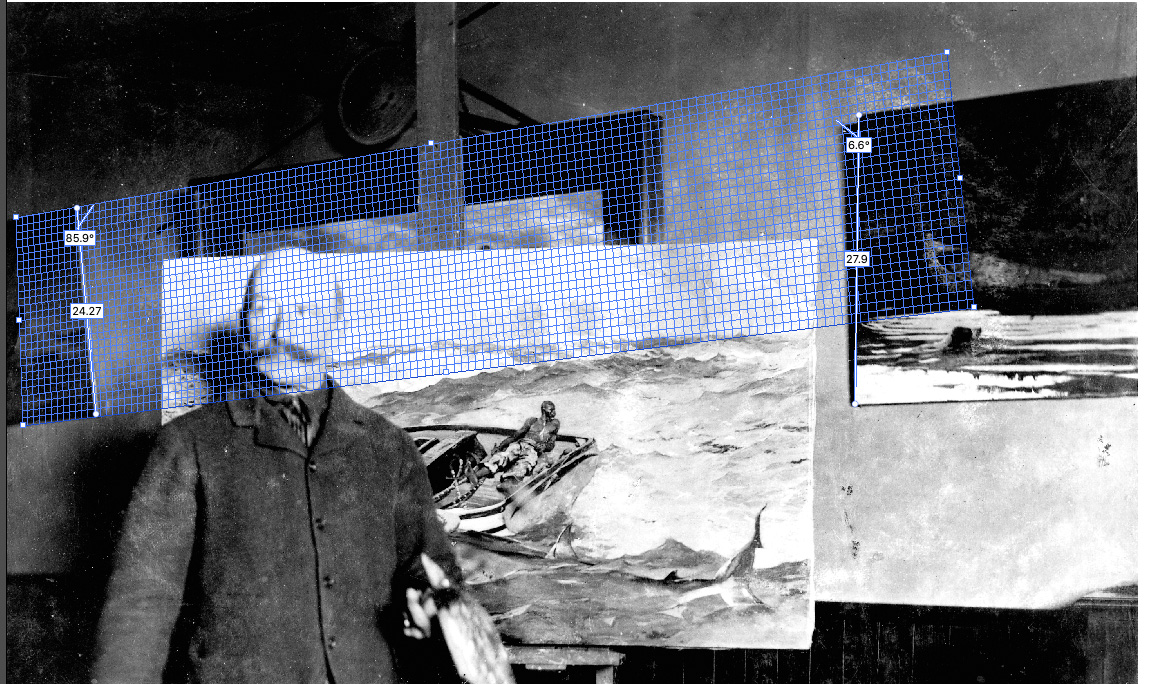
The Vanishing Point Filter indicates the unidentified painting is just over 24 inches tall.

Superimposing the complete painting, using the water reflections, hound and canoe stern as registration points, then drawing a line from the upper right that is 1.1° less than the top edge of Hound and Hunter (half of the 2.2° formed by the edge of the painting and the shadow), the Vanishing Point Filter again indicates the unknown painting is in the 24 inch range.
From Adobe Documentation: "Users ranging from architects and interior decorators to forensic scientists and woodworkers often need to know the size of objects in an image. In Vanishing Point, the Measure tool lets you draw a measurement line over an object in a perspective plane that you know the size of. The Measure tool has an option for entering a length for the measurement. The measurement line displays two text boxes: one for the length and one showing the angle that the line was drawn relative to the perspective plane. Once the measurement and its length have been set, all subsequent measurements correctly scale to your initial measurement."
Hover to pause images.
The comparisons in the third images in this and the area below were generated using Resemble.js, a framework designed to "analyze and compare images with JavaScript."
While there are false positives, the matches of rock and spray (displayed in the areas that are not magenta) show significant similarities.
Hover to pause images.
Adjustments to Match Modern Image and Unknown Painting Using the Photoshop Edit | Transform | Warp Feature
In the press release version, The Gulf Stream measures 1661 pixels wide by 1049 pixels high for an aspect ratio of 1.58:1. The dimensions of The Gulf Stream are 124.8 cm wide by 71.4 cm high for an aspect ratio of 1.75:1. The height is elongated in the studio portrait. This would indicate the photographer was using a camera where the front and back could independently pivot. But Homer's face is not unnaturally long, so it can be assumed both pivot points where aligned at his face and the elongation occurred above and below. The transformations below reflect this assumption.
As with the studio portrait, v2 Start has illumination from the side. The light bounces off the varnished portions of the rock, making them appear lighter.
Resemble comparisons make ready.psd
Position and level adjustments are listed in the image layers.
Resemble comparisons make ready.psd (Google Drive)The comparisons below show areas from the unknown painting and correlating areas of the seascape. The images are compared using Mean Squared Error (MSE) and Structural Similarity Index (SSIM) via Python and OpenCV.
An MSE of 0 indicate a perfect match; all of the MSEs are three or low-four digits and are 10% or less than the control images.
A SIMM index of 1.00 indicate a perfect match. The indexes shown below indicate there are some structural similarities between the details. With the exception of the Central Rock (0.57 / 0.31), all of the SSIM results are at least twice as large as the control image. The Central Rock MSE of 473.6 versus the control image's 14377.8 illustrates the value of looking at both MSE and SSIM results.
The images in this section have slight Gaussian blurs to reduce pixelation. The modern comparisons have been adjusted via Photoshop Multiply layers.
Portrait Image Distortion
In the portrait, The Gulf Stream's height is approximately 10% greater than actual (the aspect ratio in the portrait is 1.58:1 and its dimensions of 124.8 cm wide by 71.4 cm high create an aspect ratio of 1.75:1). Therefore, we can assume everything in the portrait is taller than actual. Further, as the bellows of a view camera allow the lens plane and the film plane to pivot independently, it can be assumed that the height distortion is not linear.
In the legend image, the heights of the areas at the top and bottom are roughly equal, but the bottom area is 6 inches tall and the top is 8.2 inches. A bellows configuration where the tops of the lens plane and the film plane are farther from each other than the bottoms would account for this.
Also, it is highly unlikely that a nineteenth century lens would not exhibit a barrel compression near its edge.

Central Rock Formation
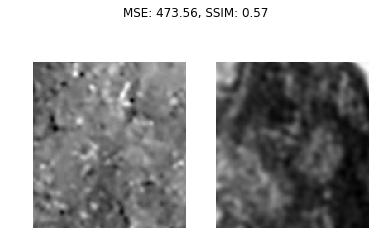
Approximately 2.5 inches high by 2.25 inches wide.
Input Images
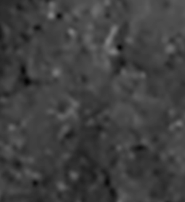
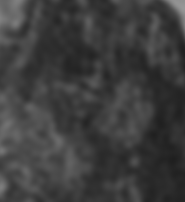
X-ray discussed in Section 6
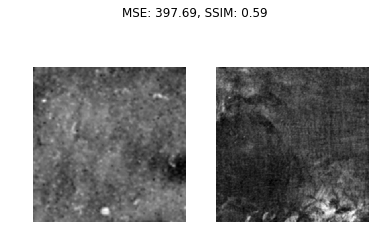
Approximately 6.1 inches high by 6.0 inches wide.
Input Images
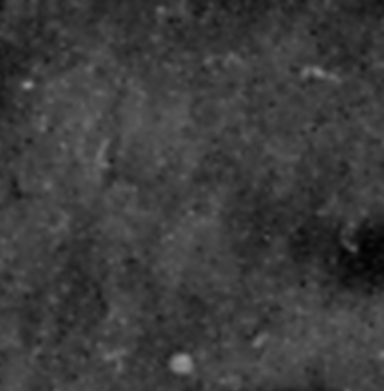
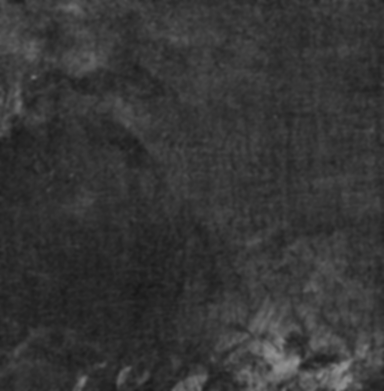
Sky
The high-contrast image used for the other comparisons makes a sky comparison difficult. This comparison image is from a screen capture from the Bowdoin Museum website. Please see the Notes area for a discussion of how the image was generated.
This modern comparison image was taken from a different photo than the one in Section 6. It is also used for the Spray comparison below. It has not been manipulated.

Approximately 8.2 inches high by 9.7 inches wide.
Input Images
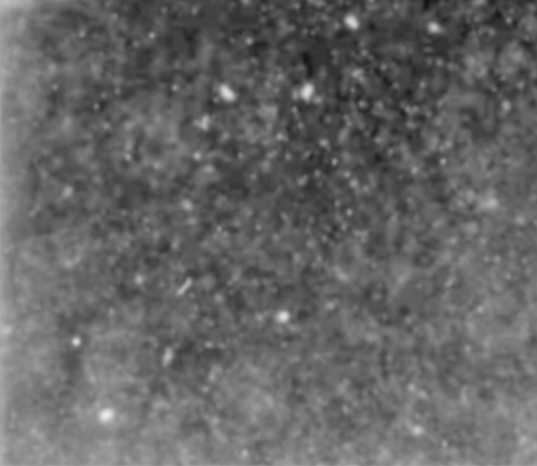
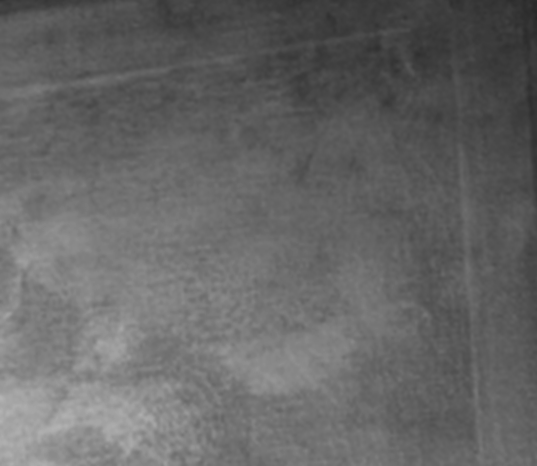
Lower Right Corner Compared to 1000 NM IR Image
The 1000 NM IR image was shot straight on and therefore requires Photoshop manipulation to recreate the angle of the portrait photo. This can introduce some subjectivity, however the figure is visible to the upper left and the corners are distinct to the lower right, so an alignment is possible. The manipulation, done in multiple steps, attempts to account for the height and barrel distortions discussed above. The original, unadjusted area appears below the comparisons.

Approximately 6 inches high by 11.5 inches wide.
Input Images
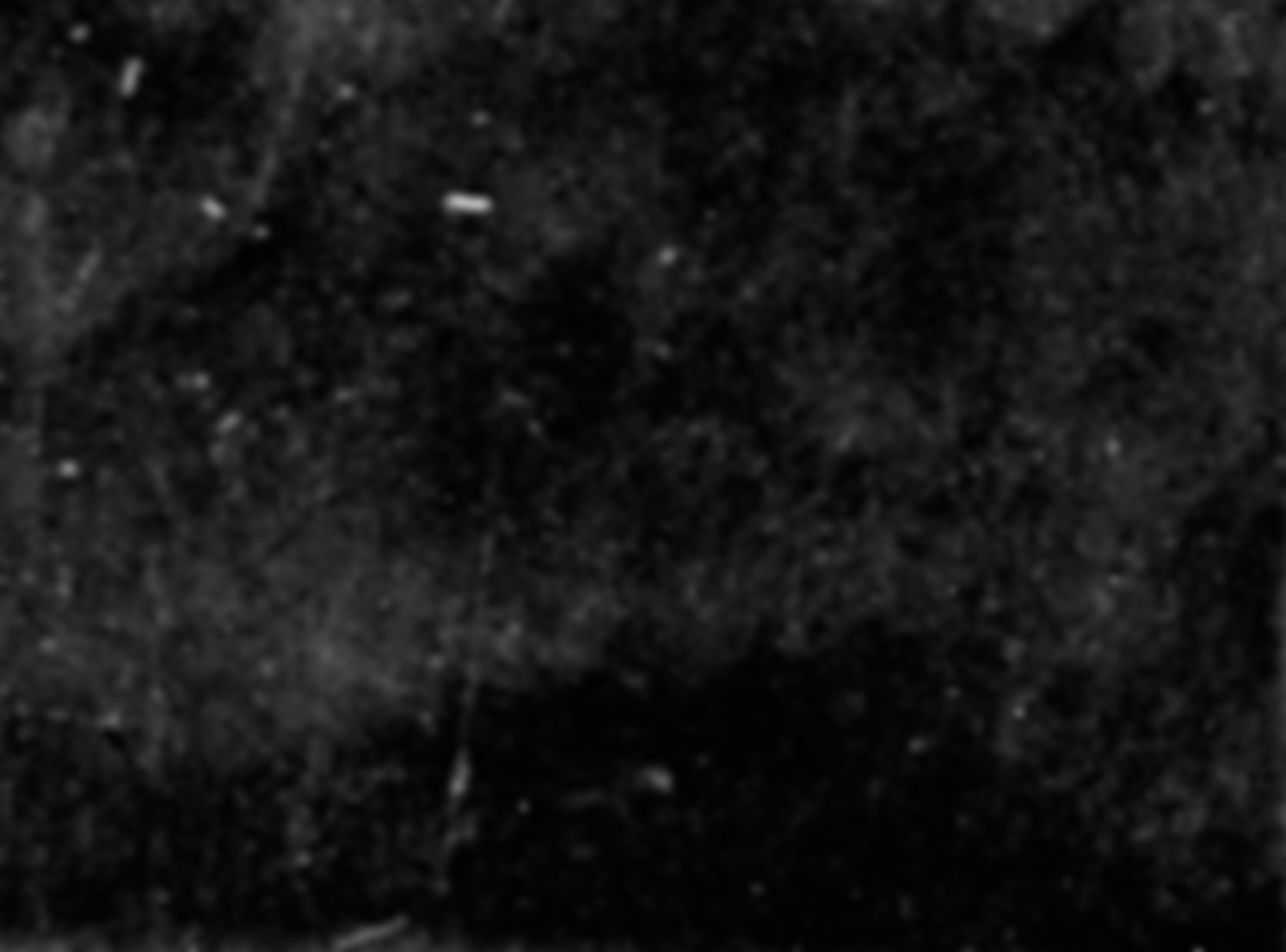
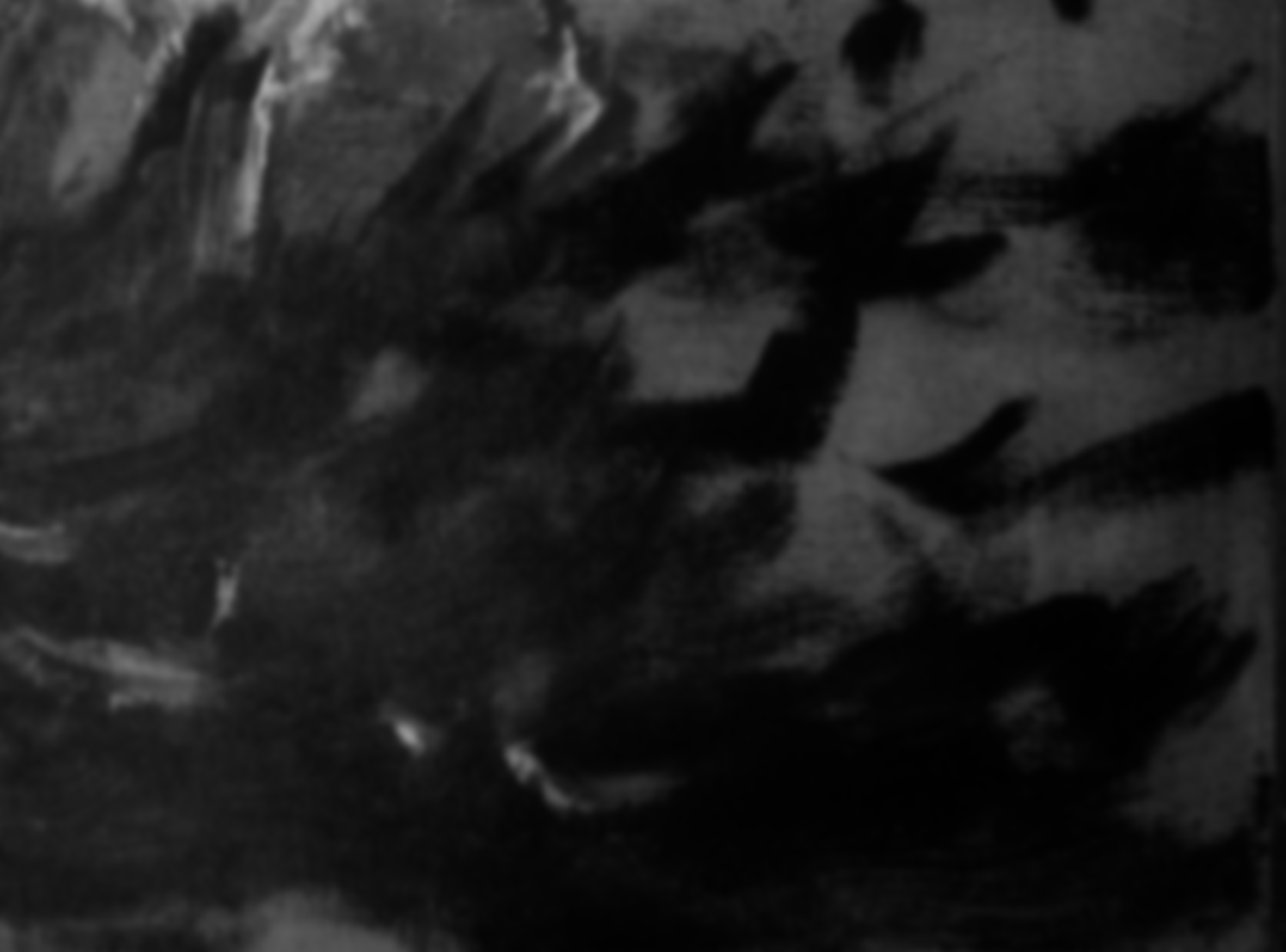
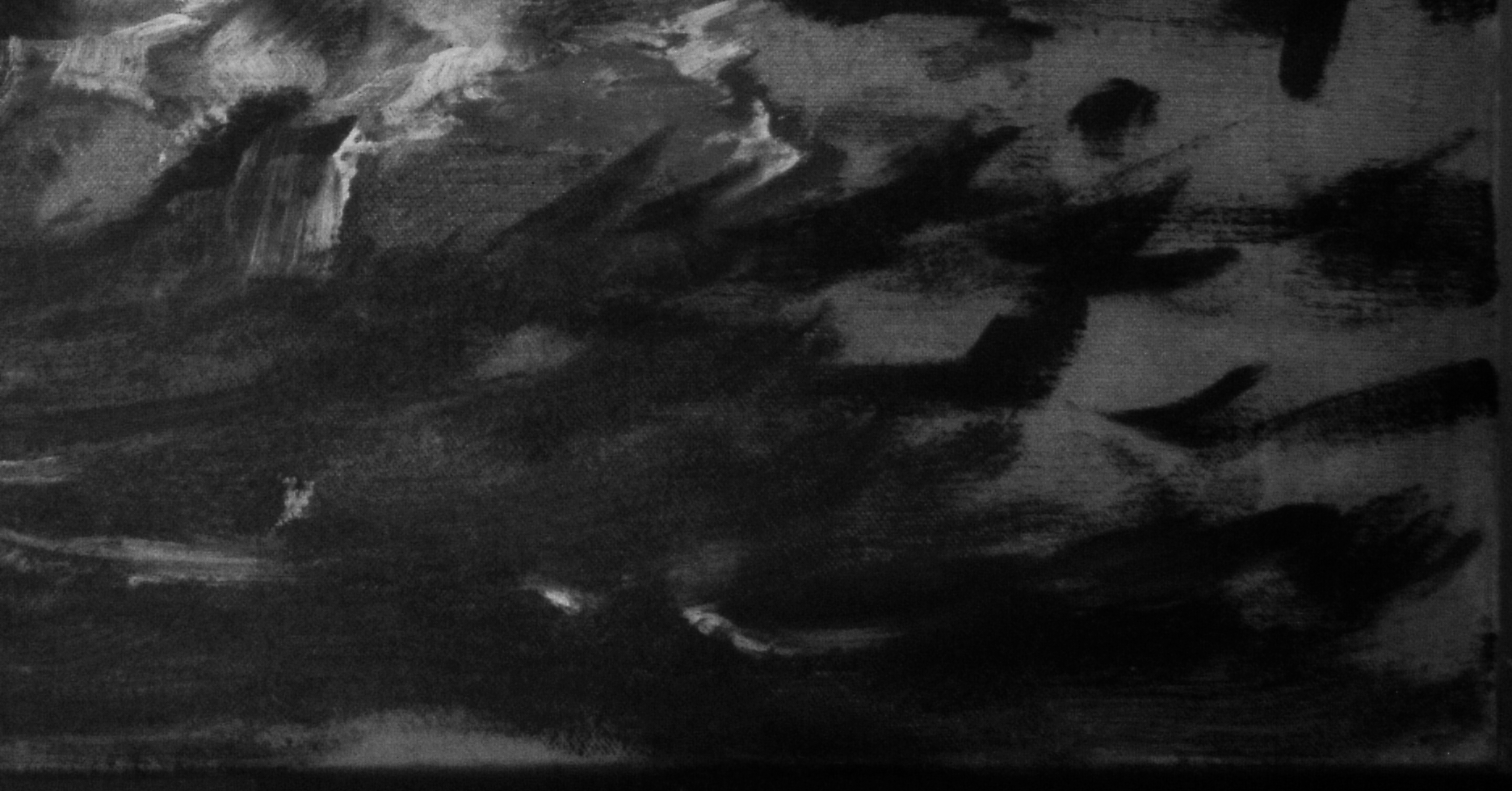
Original area prior to
resizing.
Spray and Mist above Rock
This modern comparison image was taken from a different photo than the one in Section 6. It is also used for the Sky comparison above. It has not been manipulated.

Approximately 3.4 inches high by 3.1 inches wide. The size of the modern detail was reduced 95% to improve the image alignment.
Input Images
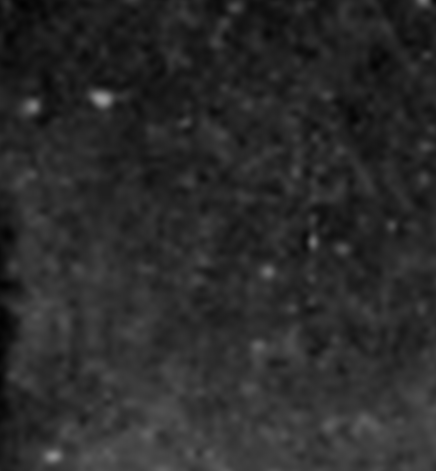
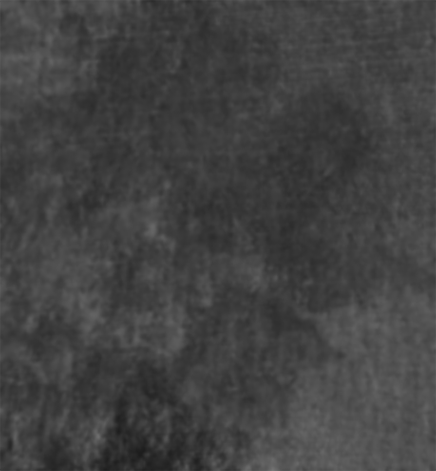
White Rhombus below Rock

Approximately 3 inches high by 2.7 inches wide.
Input Images
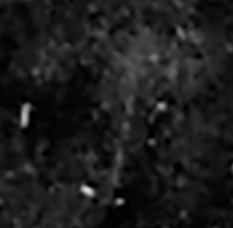
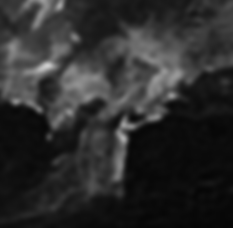
Surf to the Right of Rock

Approximately 2.1 inches high by 2.8 inches wide.
Input Images
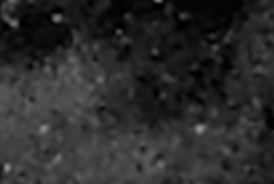
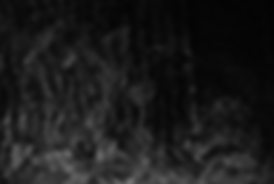
The press release image was used in this section. According to the image meta data, the tif file was created 2004-09-09 with a resolution of:
<tiff:XResolution>3000000/10000</tiff:XResolution>
<tiff:YResolution>3000000/10000</tiff:YResolution>
The image used for the material in this section was cropped to the unknown painting, then quadrupled in size in two steps. The Python scripts and source images are available in this zip file.
Sky Comparison
The Sky comparison is from a screen capture of a photo similar to the poster version.
The Photoshop layer window in the image below shows the edit decisions that brought out the details:
- Cropped
- 100% Screen (two layers combined)
- Auto Tone
- Second 100% Screen (two layers combined)
- Curves Input 85 Output 70
- 2.0 Pixel Gaussian Blur
- Default Shadow and Highlight Adjustment Feature
- Desaturate
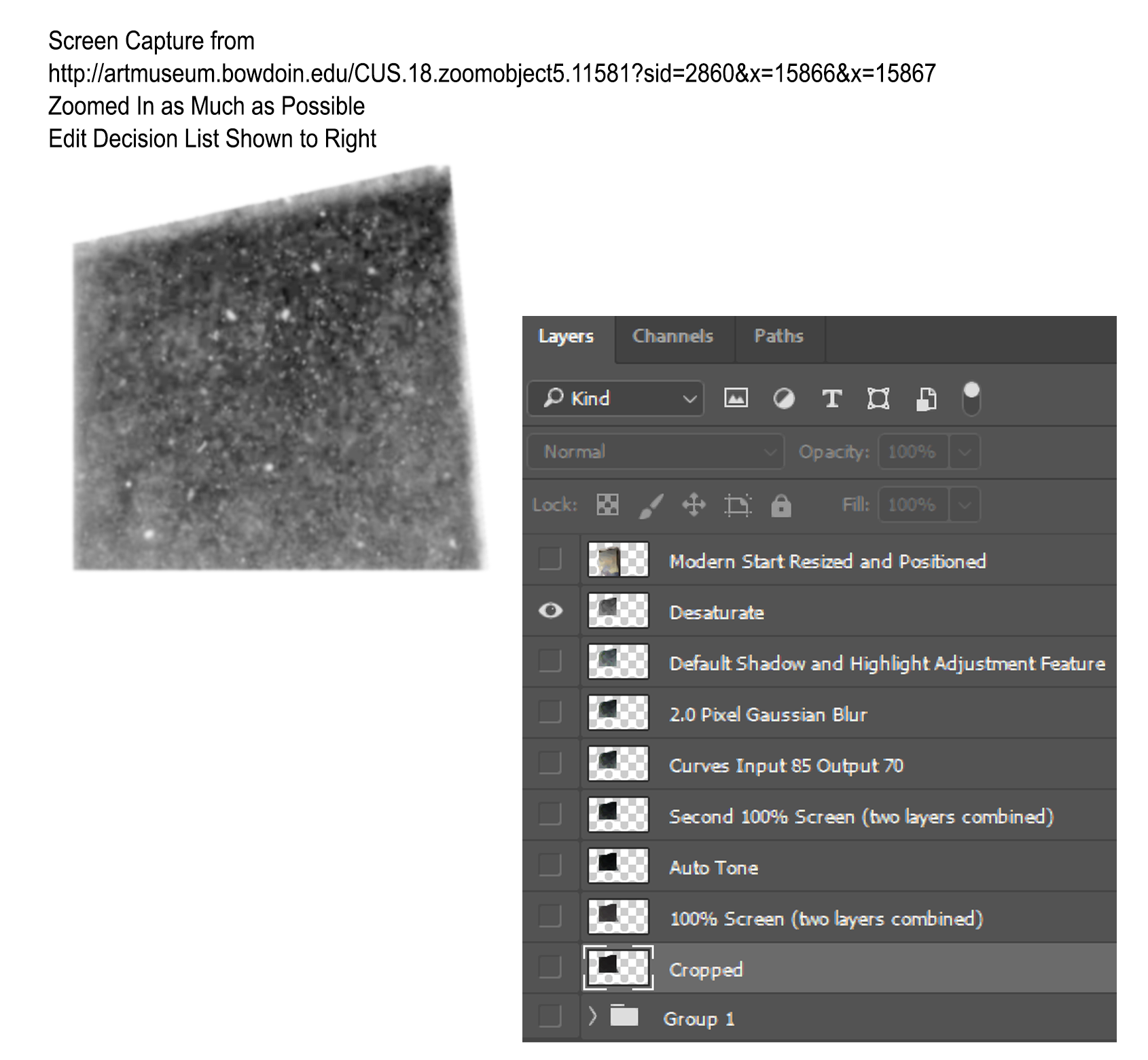
Noise filter set at 50% then adjusted with the same decisions as each comparison image.
Central Rock Formation
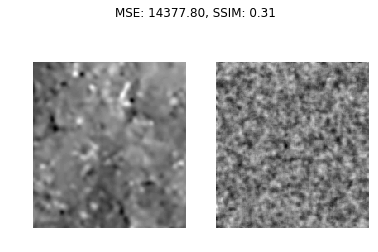
X-ray discussed in Section 6
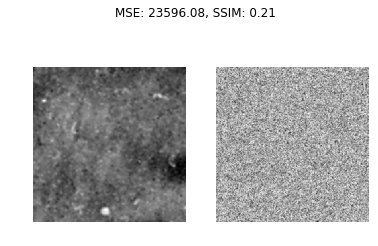
Sky

Lower Right Corner Compared to 1000 NM IR Image

Spray and Mist above Rock

White Rhombus below Rock

Surf to the right of Rock

Homer is known to have reworked paintings. The painting behind the easel in the Downes portrait, once known as Sailors Take Warning, was extensively reworked by 1907, and is now called Early Evening, as documented in this article: https://www.jstor.org/pss/3109126.
On pages 136-7 of Winslow Homer in the 1890s: Prout's Neck Observed, Philip Beam shows how Homer reworked the shape of the Cannon Rock; the comparison below assumes a similar reworking.
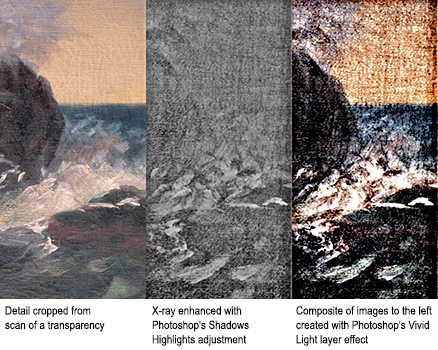
The image above shows a portion of the painting's lower right, an x-ray of the same area and, on the right, a composite created with Photoshop's Vivid Light layer effect. White areas in the x-ray that do not appear on the surface indicate the painting was reworked. The black squiggles beneath the horizon line in the composite suggest that the horizon was raised. Darker lines above the horizon indicate the possibility of further design changes.
A good portion of the spray, ocean and rock were not redone, as they compare substantially to the unidentified painting in the Downes portrait.
Section 8 and Section 12 also discuss how the painting has been reworked.
A different composite x-ray of the full painting is available here.
In May, 2012, an article called "Automatic Homographic Registration of a Pair of Images, with A Contrario Elimination of Outliers" was posted on the Image Processing On Line website. The article included an online demo, which generated the results below. The results are also available from the publication's archive:
http://www.ipol.im/pub/demo/mmm_orsa_homography/archive?key=B2A54792169FB925E13BADEBBF66F0FD
The demo is publicly available, and by no means should the results be construed as an endorsement by the article's authors or by the publication. Further, the results were created with images that had wide borders, which could affect the calculation. The initial result display also cautioned that there might be an issue with the registration.
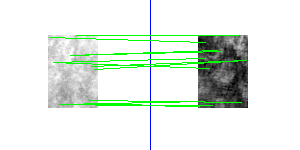
The green lines indicate "inliers," and illustrate points between the two images that have correspondence. The slanted line about a third of the way up on the right does not appear to be a correct match.
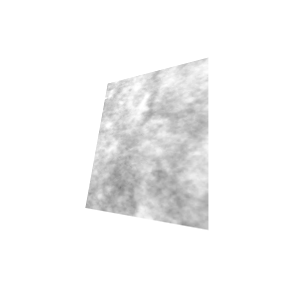 Detail
from the 1899 image adjusted by the
demonstration to match the modern detail.
Detail
from the 1899 image adjusted by the
demonstration to match the modern detail.
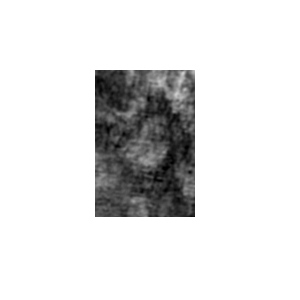 The
modern detail remains unadjusted.
The
modern detail remains unadjusted.
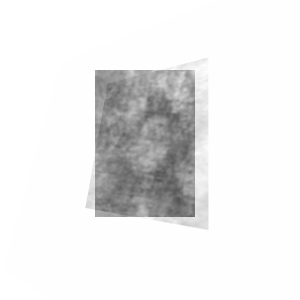 Combined
images illustrating correspondence between the
1899 detail and the modern detail. (Link to
slider
comparison.)
Combined
images illustrating correspondence between the
1899 detail and the modern detail. (Link to
slider
comparison.)
The results were generated over several dozen attempts, as contrast levels of the comparison images were adjusted. While the proportion of failure to success is significant, tests on the system using two images containing identical shapes, with one of the image slightly blurred, failed to generate a registration. Understandably, comparing an image to an extreme closeup from a hundred year old photo presented a greater challenge.
Hover to pause images.
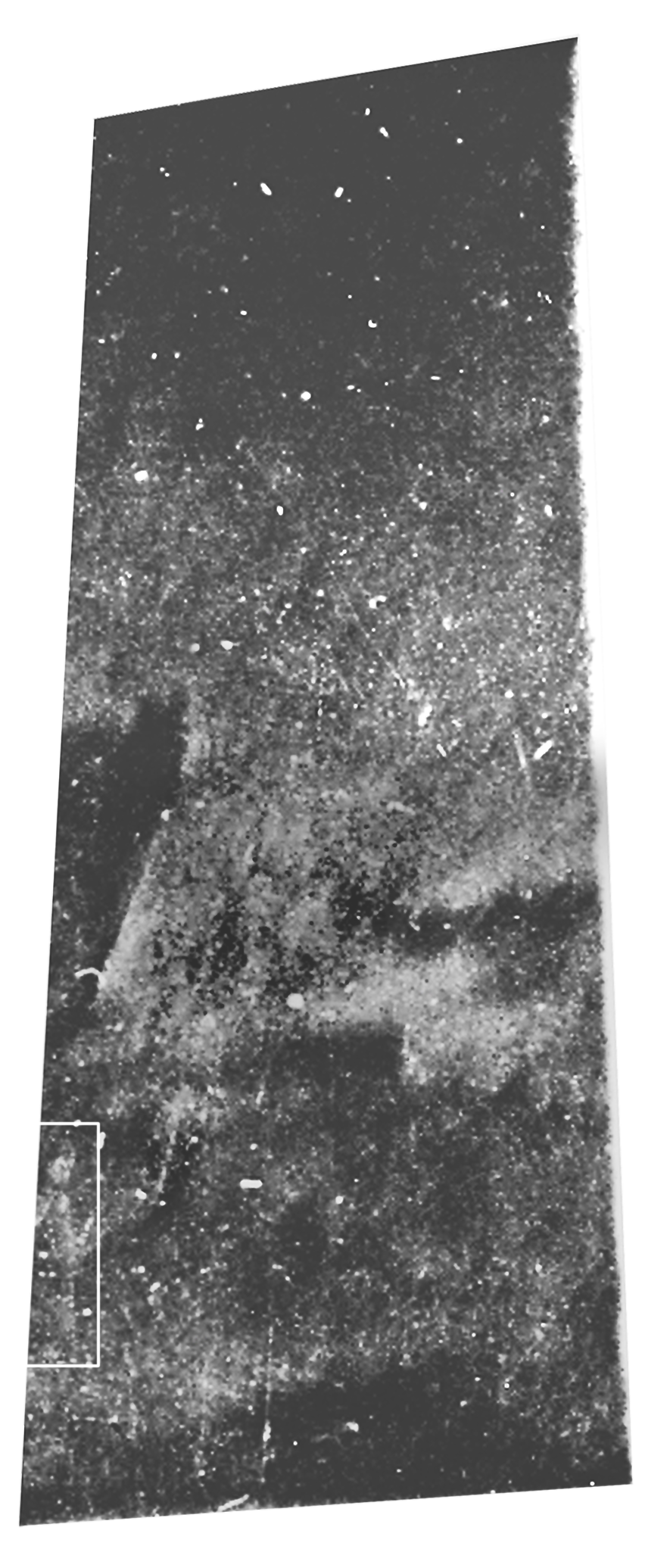
In the press release version of the studio portrait, which extends farther to the left than the poster version, the unidentified painting shows a standing figure. Apparently painted out later (other parts of the paining have been reworked, as discussed in Section 6), the figure appears in a professionally photographed infrared image taken with a 950 nm filter. The infrared image above is an enhancement from the original photo (figure is found to the left of the straight white line descending beneath the rock).
Downloadable project assets are available here.
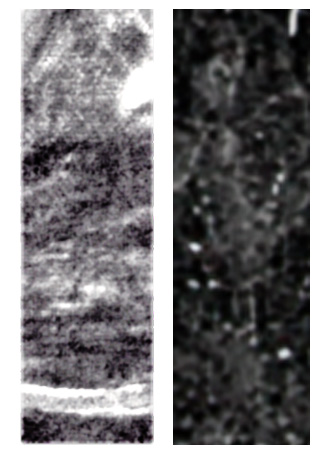
An enhancement from a 1000 nm IR image and the man from the studio portrait.
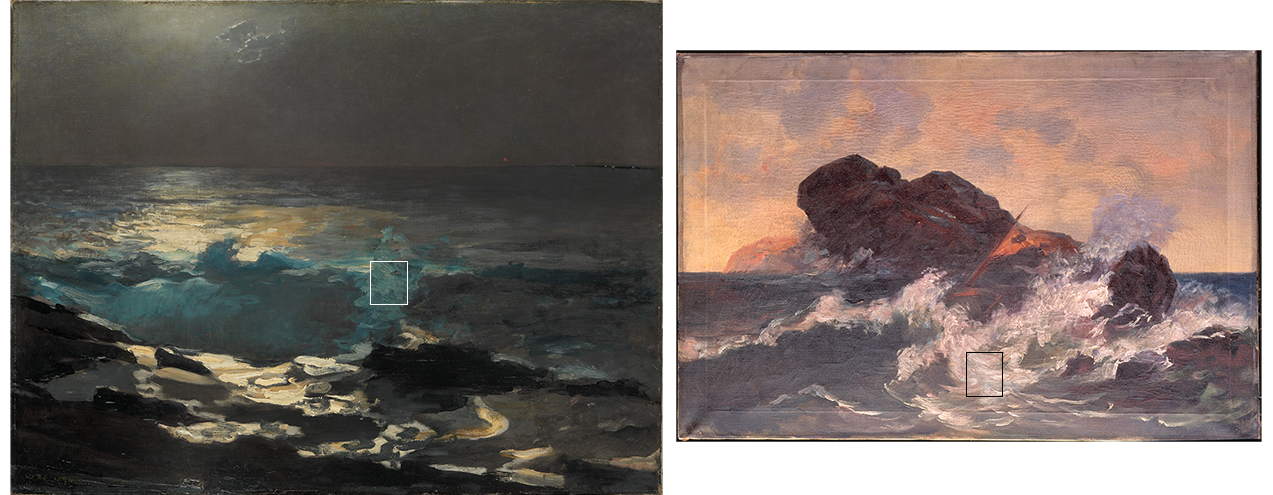
A high resolution image of The Metropolitan Museum of Art's Moonlight, Wood Island Light clearly displays raking marks a little to the lower right of center.
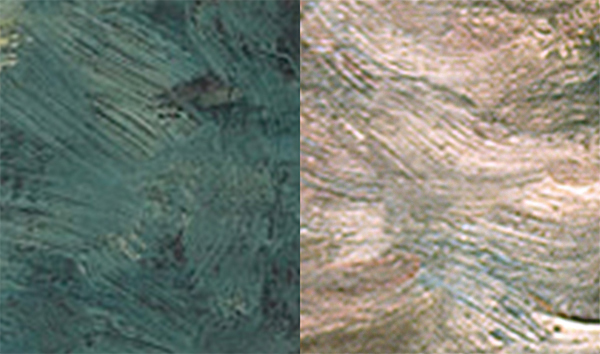
In the comparison image, the dimensions are matched, each showing an area of 2.25 x 2.5 inches.

This extreme close up of the comparison areas has red lines that measure one eighth of an inch, bisected at one sixteenth of an inch.
Canny Edge Detector
The Canny edge detector converts an image into a graphic without grays. This can be used to compare the texture created by the raking tool.*
Canny Edge Wood Island Light
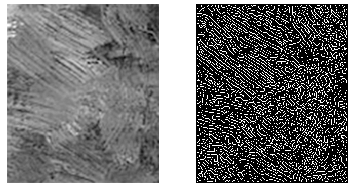
Canny Edge Shooting Rock
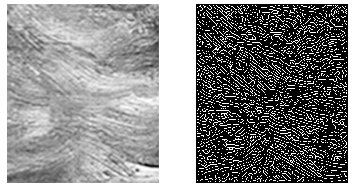
Canny Edge Control Image
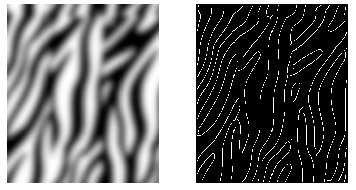
Parallels can be determined by comparing histograms. In this case similar stroke lengths and teeth width (but not depth) will return similar values.
Histogram for Canny Wood Island
Light: Black:84448 ; White 21752
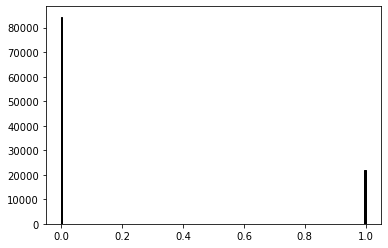
Histogram for
Canny Shooting Rock: Black 85373;
White 20827 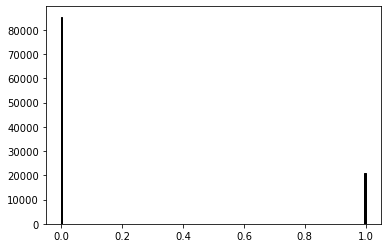
Histogram for
Canny Control Image: Black 99687;
White 6513 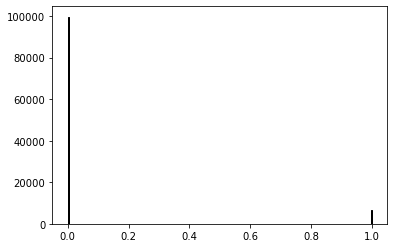
In this representation, the histogram values total 106,200. For Wood Island Light and Shooting Rock, there is less than 1% difference when comparing values against the total.
| Wood Island Light | Shooting Rock | Control Image | ||||||
| Black | 84448 | 79.52% | 85373 | 80.39% | 99687 | 93.87% | ||
| White | 21752 | 20.48% | 20827 | 19.61% | 6513 | 6.13% | ||
| 106200 | 106200 | 106200 | ||||||
* Canny Settings: gaussian_filter 1; np.random.random * 0.2, Sigma 1.8.
Known examples are on the left

Wave Backwash, Moonlight, Wood Island Light: Dimensions are matched; each shows 2.25 x 2.5 inches. (Discussed in Section 9).

Wave Swell, Moonlight, Wood Island Light

Wave Form, Kissing the Moon: Images match in terms of size and shape.

Curved Impasto, Summer Night; each shows 1.0 x 1.0 inch.

Wave Peak, Kissing the Moon

Wave Peak, Summer Squall

Wave Peak, The Gulf Stream; each shows 1.4 x 0.8 inches.
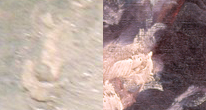
Impasto, High Cliff, Coast of Maine
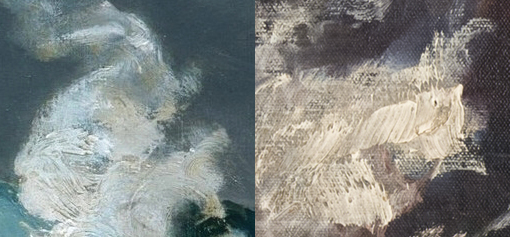
Impasto, Northeaster; each shows 3.4 x 3.1 inches.

Wave Peak, The Backrush





Foam, The Backrush
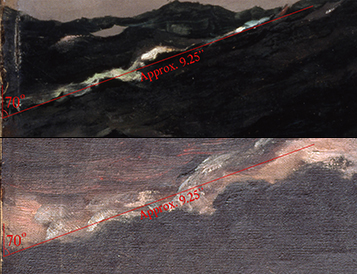
Wave Form, Kissing the Moon: While this comparison does not reflect matches in brush stroke or pigment, it does show a similarity of wave length and angle. Both wave forms appear on the left of the painting.
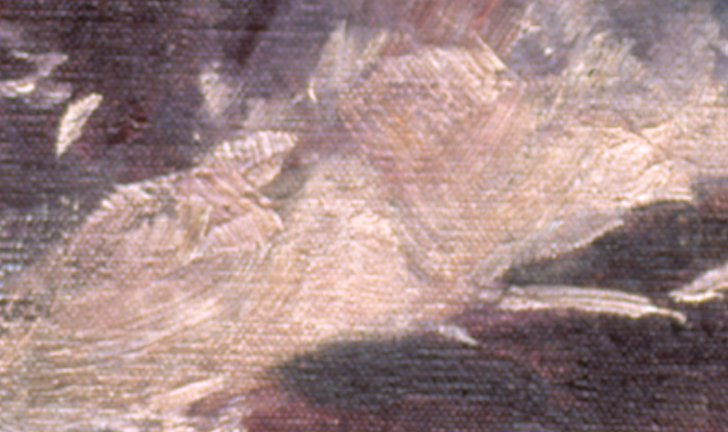
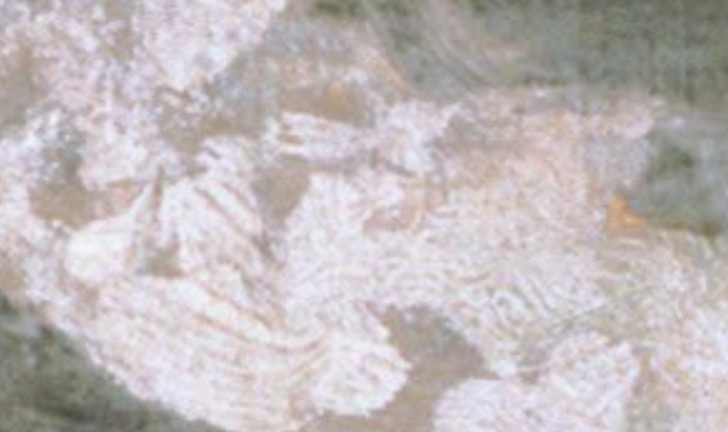
Extreme closeups of whitecaps from The Lifeline and Shooting Rock (canvas sizes not matched).

Wave Swell, Two Figures by the Sea
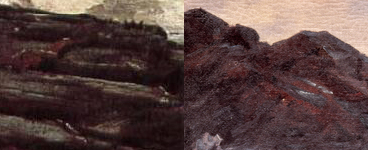
Rock Strata, Driftwood: Suggestions of pooling water are drawn as white lines.
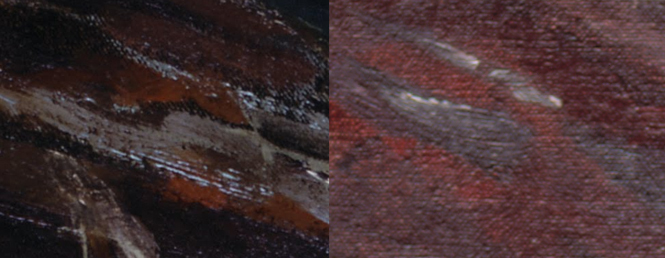
Rock Strata, Sunlight on the Coast

Rock Strata, A Light on the Sea: Dimensions are matched; each shows a width of 2.5 inches.
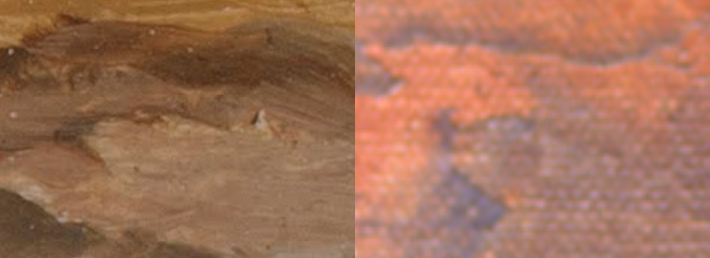
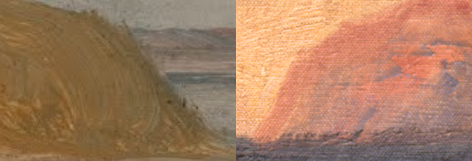
Detail and Shape of Headland, Distant Island, Maine Coast, Fisher Collection

Semi-Submerged Rock, Moonlight, Wood Island Light

Rock, The Backrush

Sail, The Gulf Stream; at the time of the studio photograph, this sail had not been added to the deck.
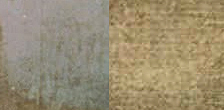
Abstract Squigles above Sail, The Life Line
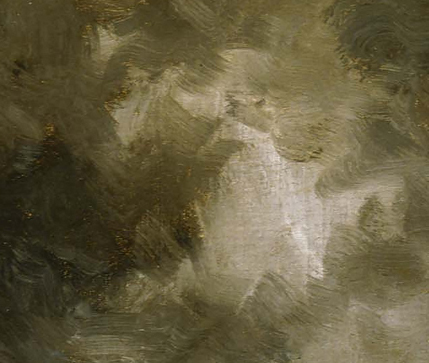
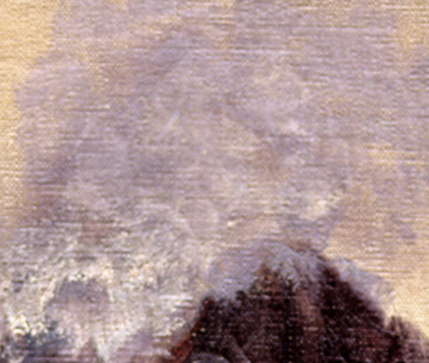
Similar peaking shapes and proportions between the clouds and moonlight in To the Rescue and the crashing surf above the rock; each shows 4.8 x 4.0 inches.
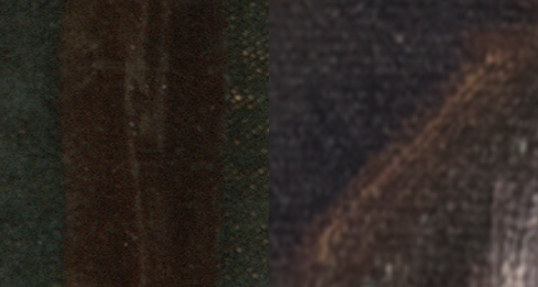

Wood Grain, Eight Bells
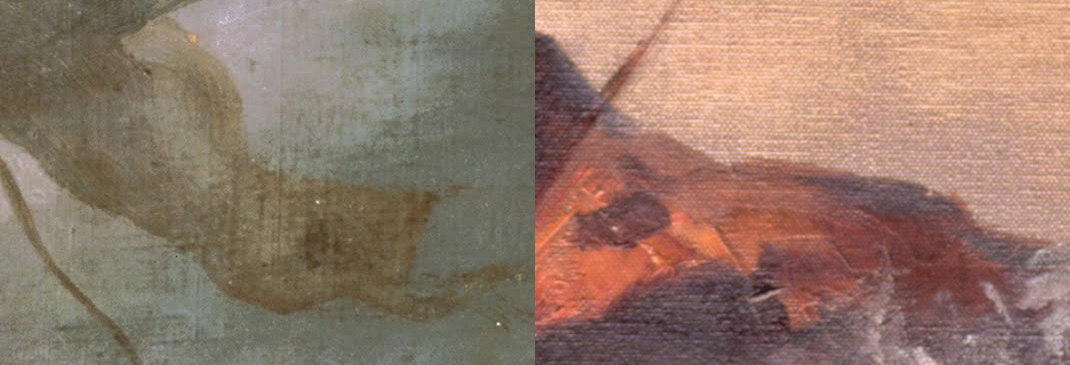
Wafting Sail, The Life Line

Covering Brush Stroke, Early Evening (Sailors Take Warning): Dimensions are matched; each shows a width of 1.25 inches.

Blue-Gray Highlight, The Fog Warning
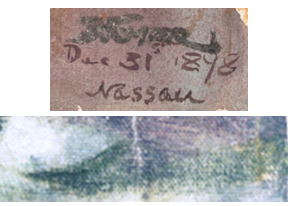
The upper image shows the signature from A Wall, Nassau, where the W overlays a looped H and the O is tangent to both.
Similarly, a W and an O can be seen in the lower image. The lower image was created from two professionally photographed exposures, one with left raking light and the other with right raking light. These images were stacked via a Photoshop's Smart Layer. A zipped version of the Photoshop PSD is available here (275,000 KB). The image was brought out using Adjustment Layers applied to the entire area.
The signature is placed lower right.
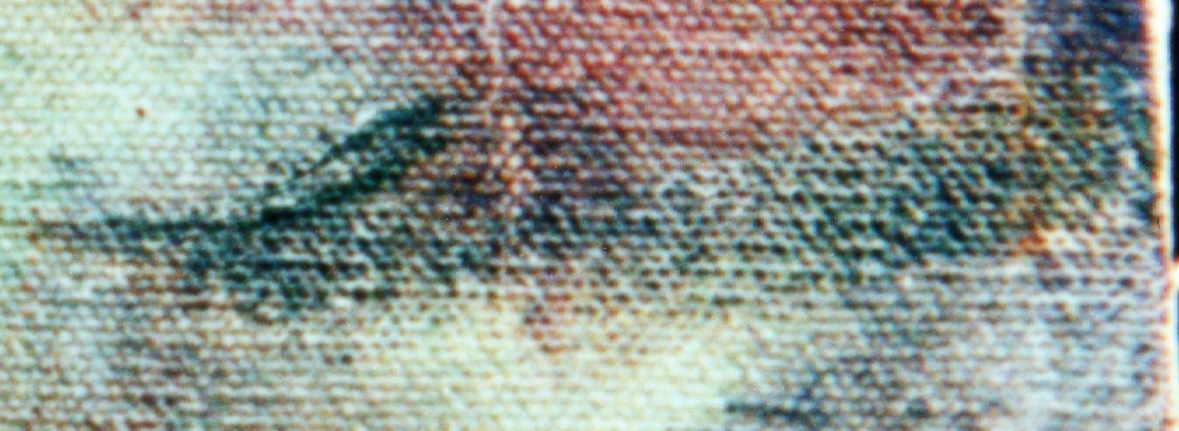
Signature brought out with a series of photographic inter-negatives that were pushed on processing to increase contrast. The image scan has simple enhancements.
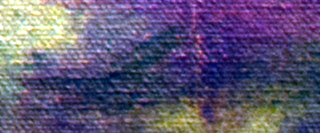
An enhancement of a near-infrared exposure with a 0.5 pixel Gaussian blur. Curves were adjusted to increase contrast.
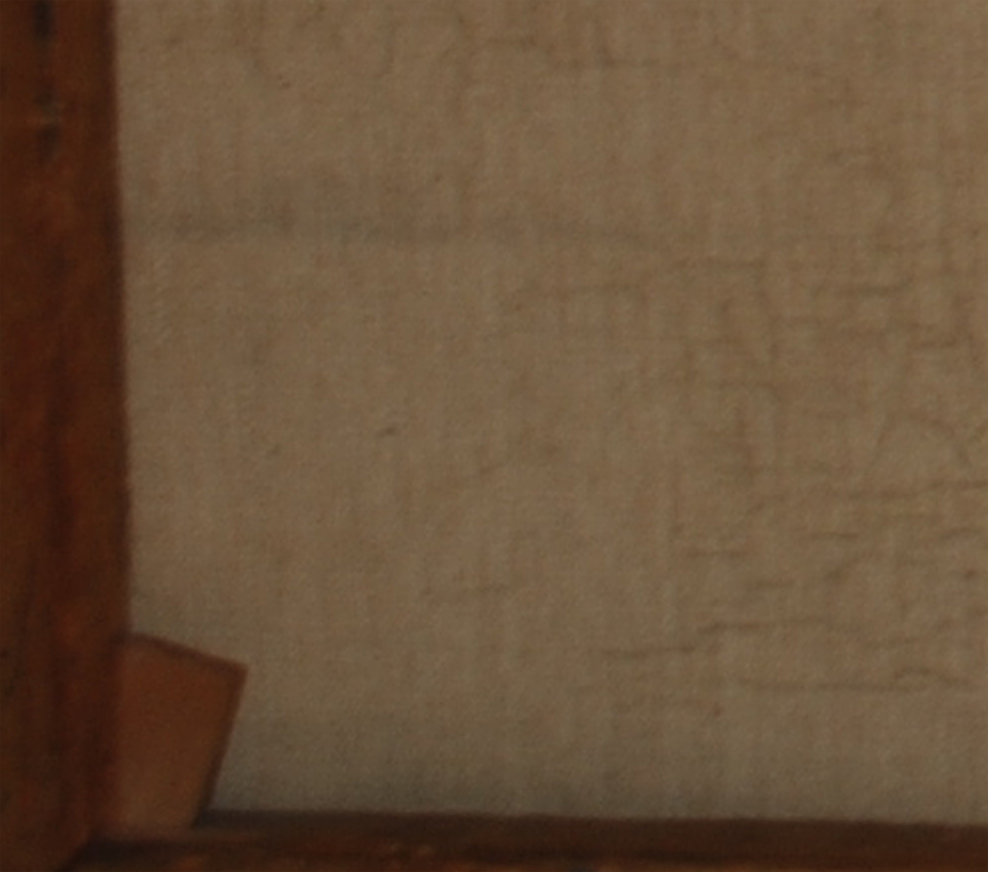
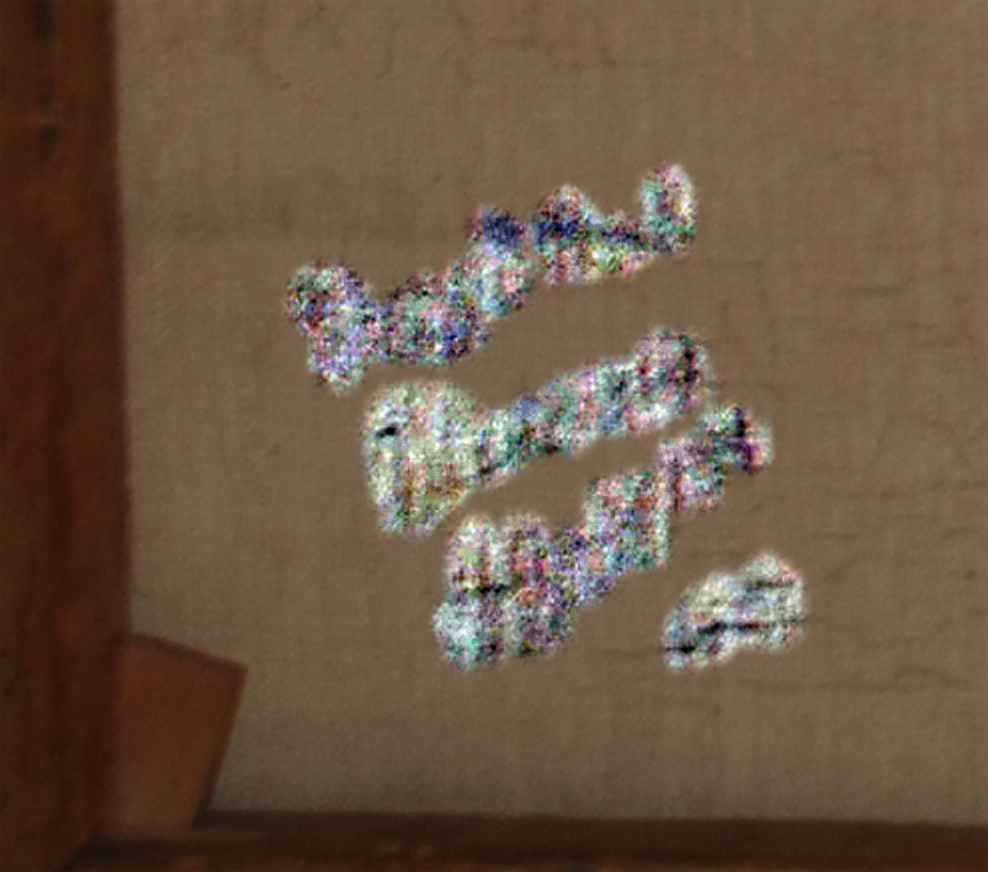
Though the canvas back appears to have been cleaned with a solvent, a title and signature can be seen to the lower left.
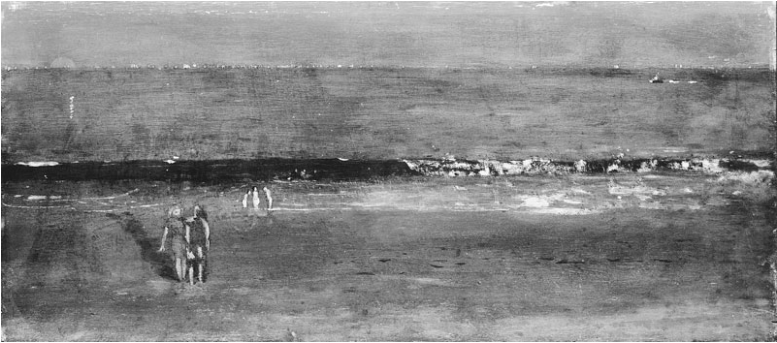
The Beach, Late Afternoon is thought to be a sketch for Low Tide. The design is panoramic, as is this potential reconstruction (includes fragment described here). The result would be a painting 76 inches wide, which is not unheard of (for example, Thomas Cole's The Oxbow). Low Tide, which was exhibited in 1869, was described in a review as having dimensions of twelve square feet.
Beach Scene at the Museo Thyssen-Bornemisza, Madrid and On the Beach, in the Arkell Museum in Canajoharie, New York were cut down from Low Tide. Together, Beach Scene and On the Beach account for less than four square feet.
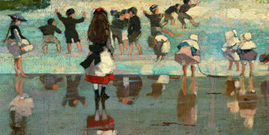
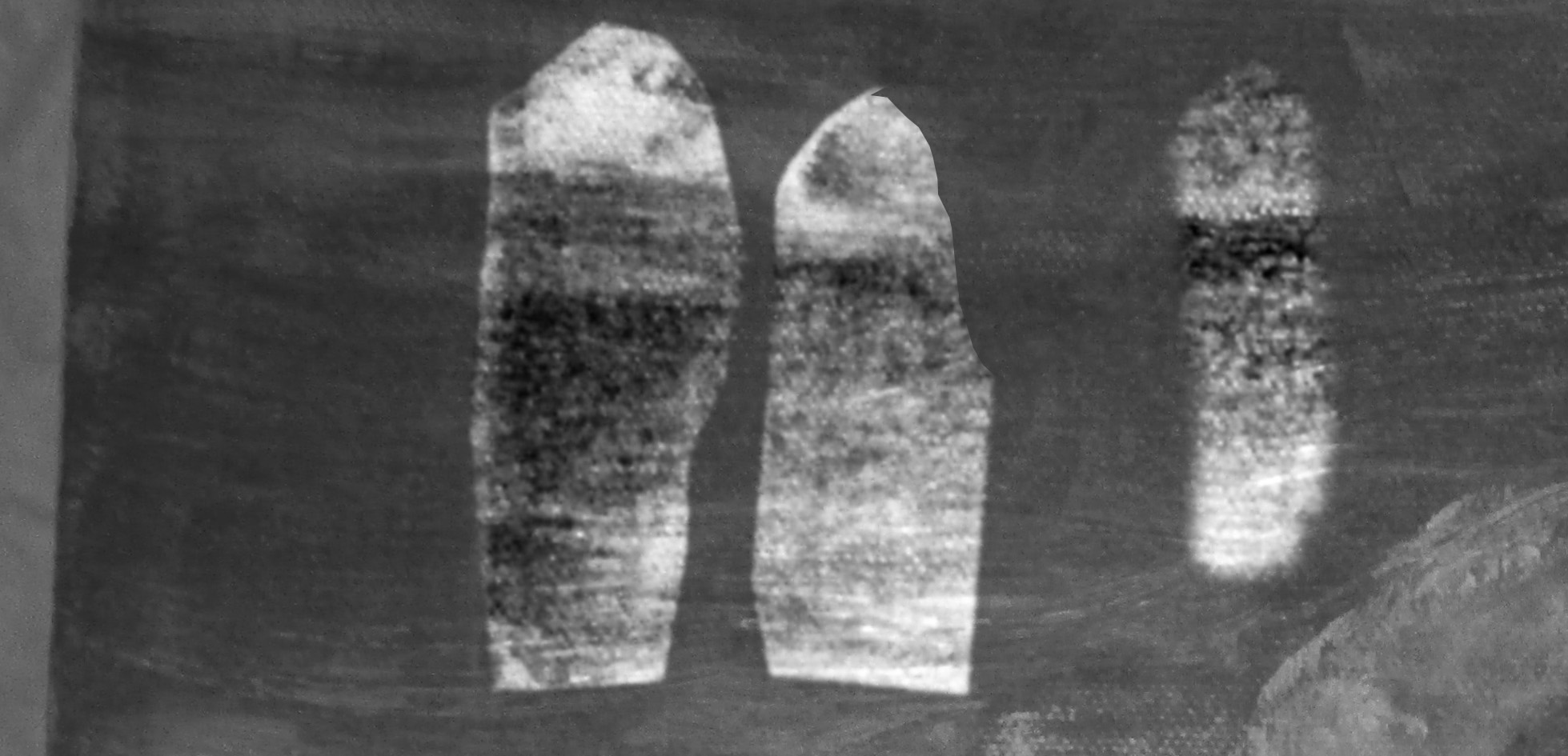
An enhanced infrared photo of the seascape's left above the water line shows three children. The vertical lines that are probably legs are not consistent with the horizontal lines on the painting's surface. The figure on the left might be holding a toddler looking back.
The untraced Girl in the Surf (referenced in Margaret Conrads' Winslow Homer and the Critics, page 37) possibly appears in a professionally photographed infrared image, showing an area below the water line on the left.
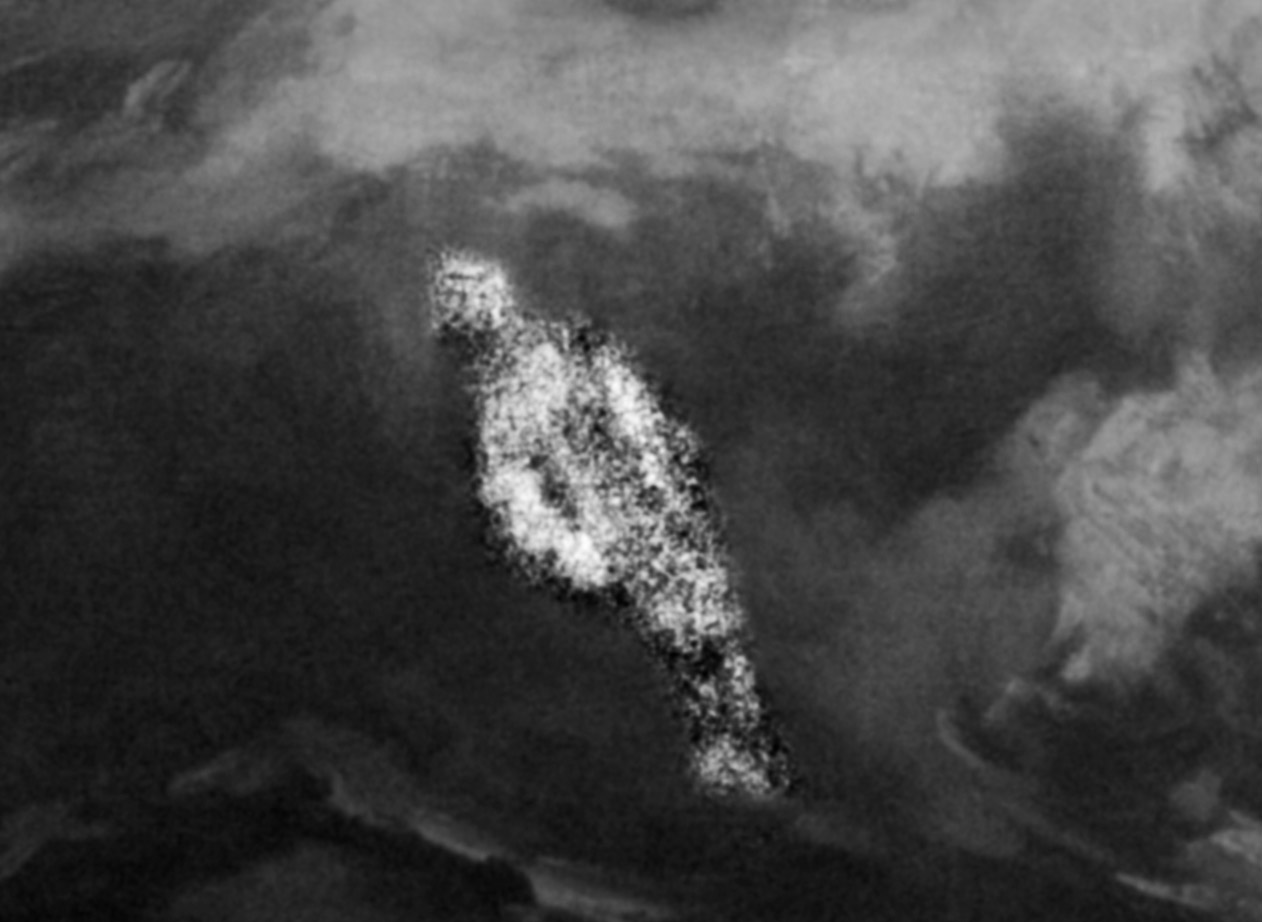
Possible Inscription for Girl in the Surf
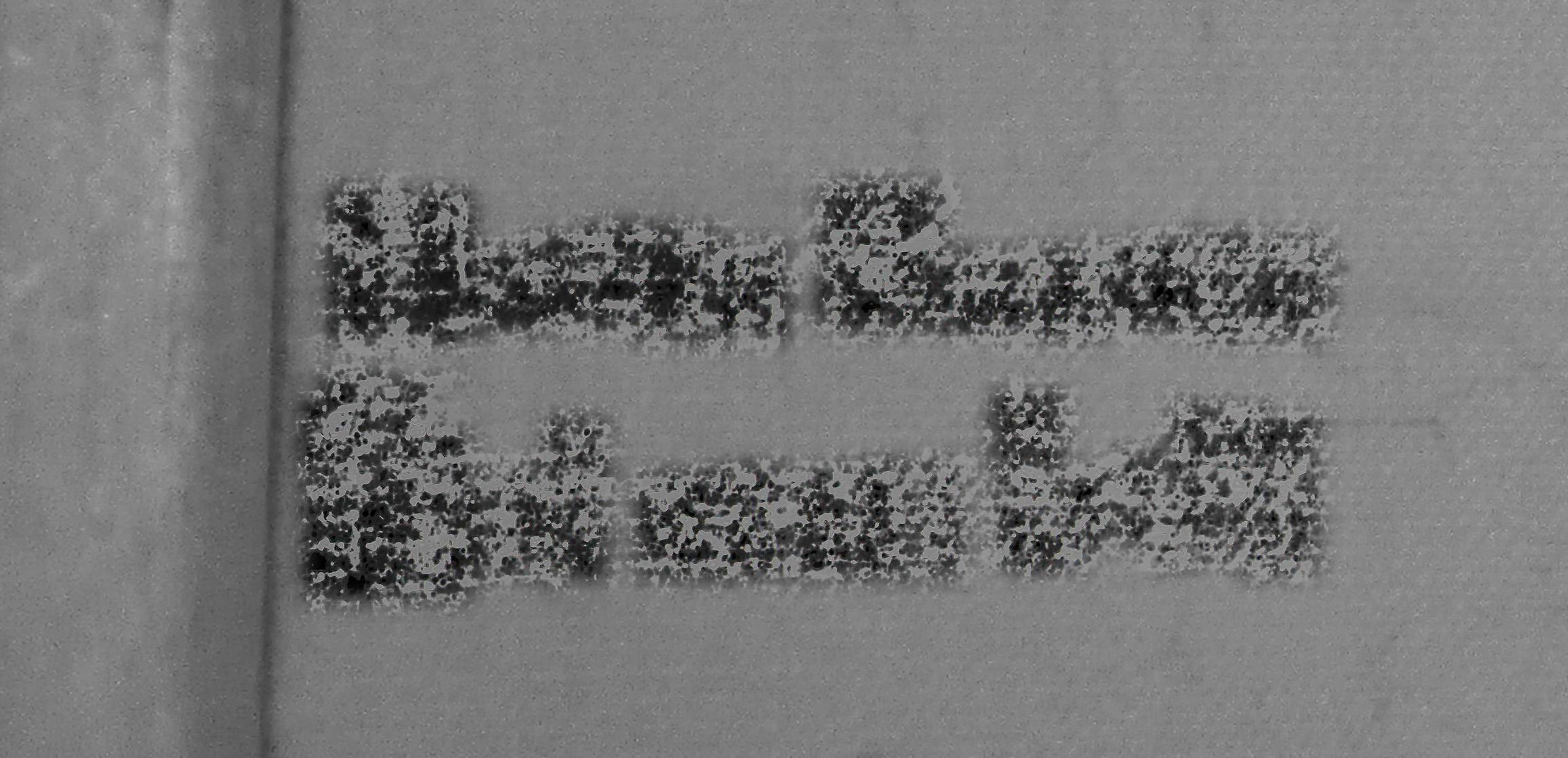
This enhanced detail of the canvas back from a photo taken with a 950 NM IR filter could show an inscription for Girl in the Surf.
Possible Signature from Infrared Image

This enhanced detail from the infrared image could show the signature for Girl in the Surf.
Image Locations
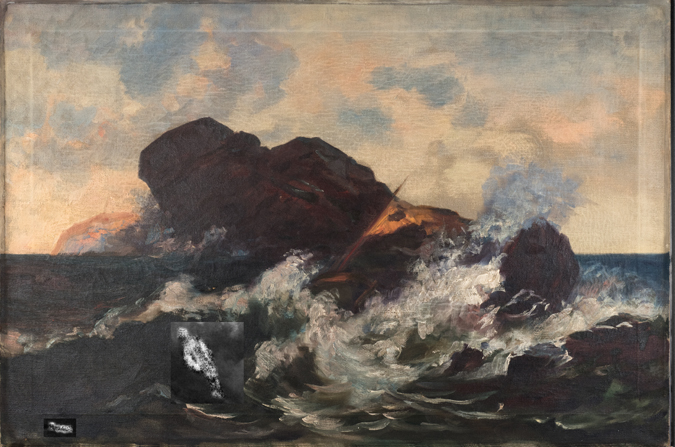
In an email exchange with a former staff member of the Canajoharie Museum (now The Arkell), it was mentioned that x-rays of On the Beach show that it had once been a farm scene. The aspect ratio of an oil sketch for a farm scene called The Gleaners (1867) is 1:3, as is this potential reconstruction.
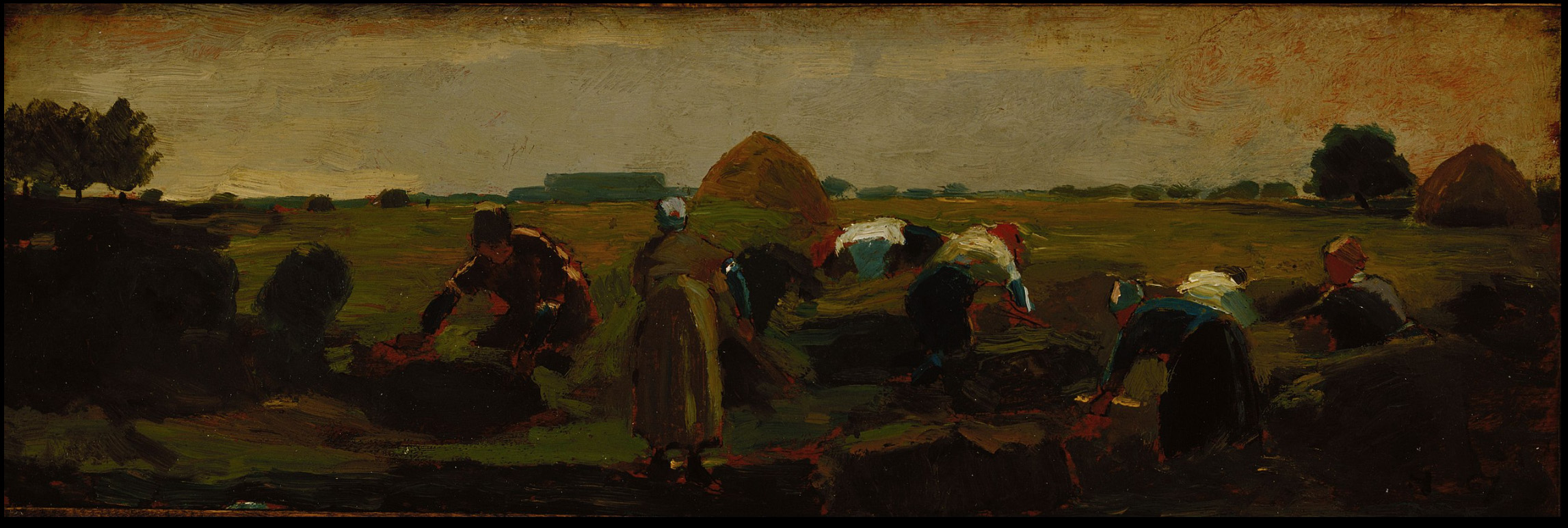
A full x-ray of the painting shows what might be two figures and a calf from a farm scene.
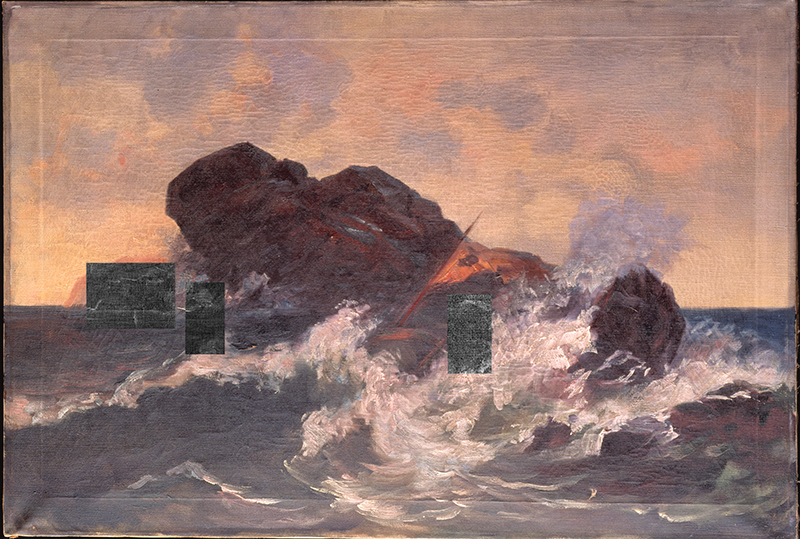
The x-ray shows a different paint layer than the IR images. While the figure on the left is a similar size to the IR beach figures, the beach figures do not appear here. The figure appears to be looking down as they do something with their hands. To the figure's left, a small cow or calf appears to be watching.
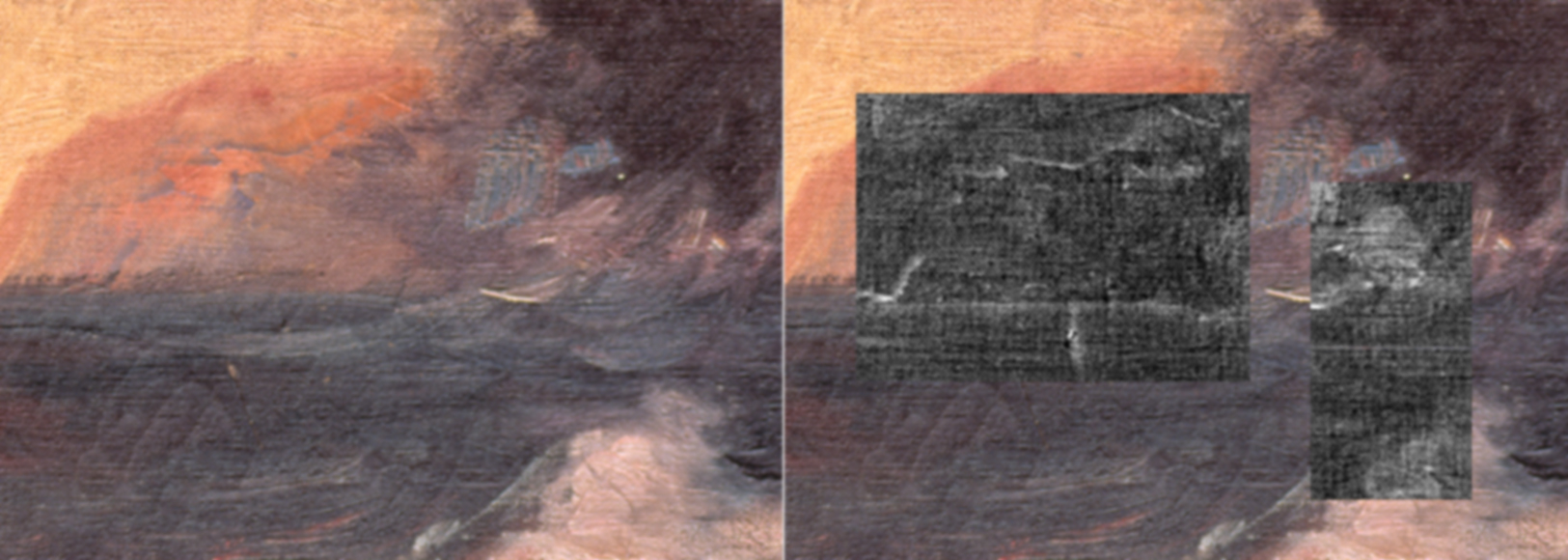
What might be a larger figure in the foreground appears near the center of the painting. The white at the crown of the head, now painted over, could be a bonnet.
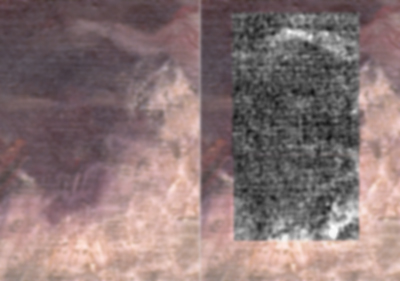
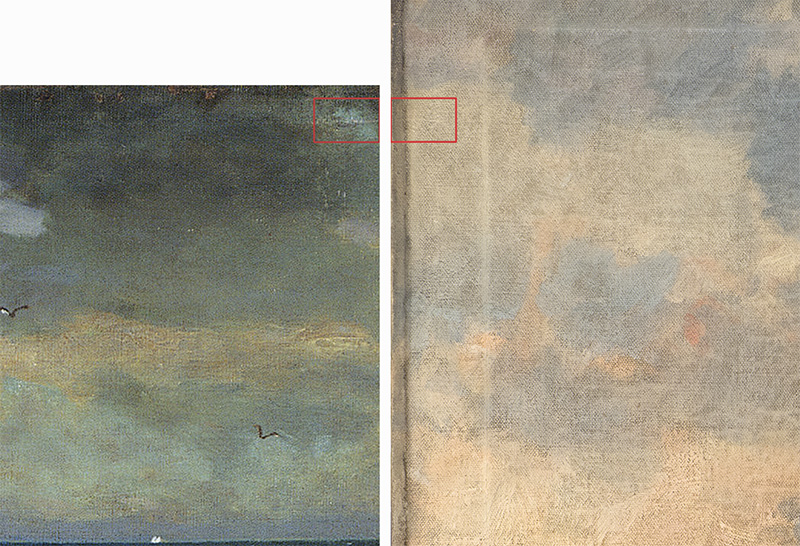
This possible alignment of the sky from On the Beach at the Arkell Museum and Shooting Rock both show raised horizontal threads.
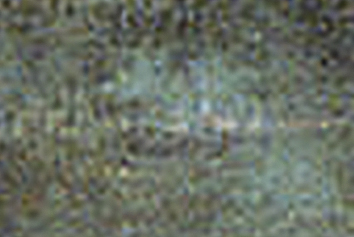
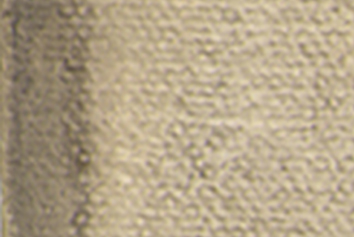
The canvas weave of Beach Scene can be seen in this Wikipedia image.
The comparisons below show areas 3/4 inch high by 1 inch wide. For Shooting Rock, an area near the left edge of the painting was selected, where it's assumed the canvas is less stretched and the thread count per inch is close to Beach Scene's. (Please see Thread Count below.)
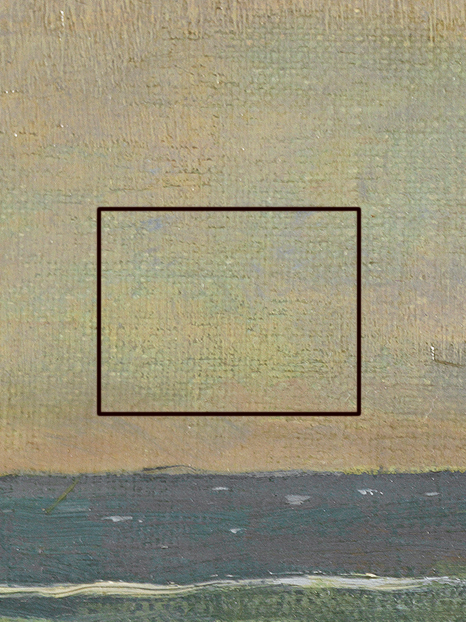
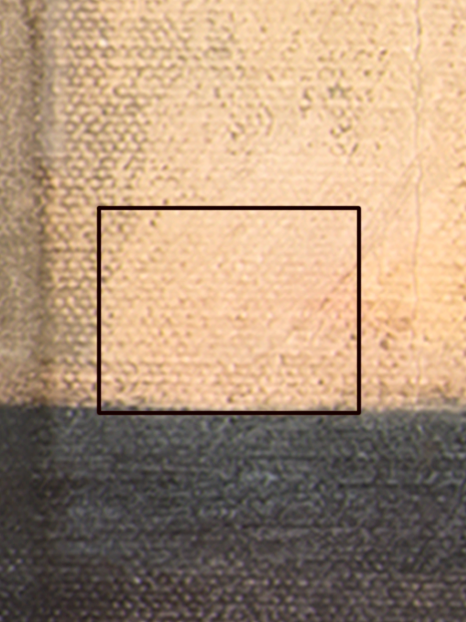
The dots indicate areas where the weave patterns align.
Thread Count
For the examples below, the images were adjusted to 300dpi and resized with Photoshop to match each painting's width.
Beach Scene
Beach Scene was then sized down 98% to adjust for the possibility that the images were cropped to less than the paintings' dimensions. This increases the thread density.
While generally the thread count of Beach Scene exceeds the thread count of Shooting Rock, there are areas where the counts are close. Using software available at this GitHub repository*, thread counts were generated for 1cm by 1cm squares using these settings:
- manual thread count entry 13 horizontal by 13 vertical
- filter: Local
- block size: 2/5
- overlap 10
- FFT: 1024
- dpi: 300
- method: 1
*These results are not proof of matches, and by no means should the results be construed as an endorsement by the software's authors.
Beach Scene
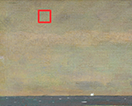
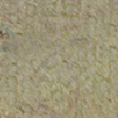
horizontal thread density (11.41 +/- 1.89
threads/cm)
vertical thread density (12.03 +/- 2.22
threads/cm)
horizontal thread angles (90.2 +/- 10. degrees)
vertical thread angles (-0.361 +/- 10.1
degrees)
Shooting Rock
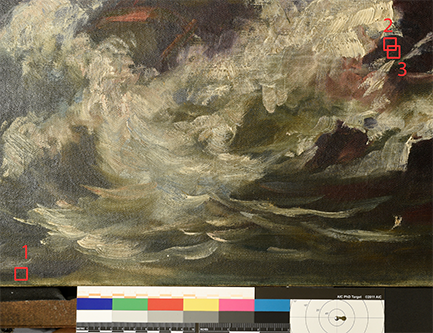
1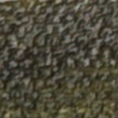
horizontal thread density (11.82 +/- 1.7
threads/cm)
vertical thread density (13.11 +/- 2.9
threads/cm)
horizontal thread angles (84.8 +/- 7.48
degrees)
vertical thread angles (-1.1 +/- 10.9 degrees)
2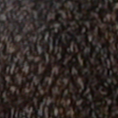
horizontal thread density (11.51 +/- 1.28
threads/cm)
vertical thread density (12.8 +/- 2.84
threads/cm)
horizontal thread angles (90.3 +/- 4.5 degrees)
vertical thread angles (3.64 +/- 17.1 degrees)
3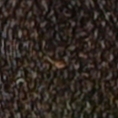
horizontal thread density (11.61 +/- 1.21
threads/cm)
vertical thread density (12.19 +/- 2.77
threads/cm)
horizontal thread angles (88.7 +/- 7.87
degrees)
vertical thread angles (-1.21 +/- 11.3 degrees)

Extreme closeup comparison of Beach Scene threads (left) and threads from Example 2.
On the Beach
The images below started with this Wikipedia image of On the Beach.
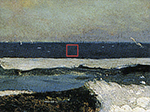
On the Beach
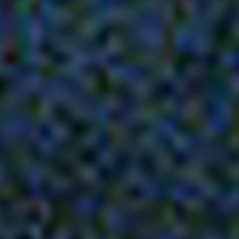
horizontal thread density (13.8 +/- 1.94
threads/cm)
vertical thread density (12.71 +/- 2.09
threads/cm)
horizontal thread angles (92.0 +/- 12.4
degrees)
vertical thread angles (-1.63 +/- 15.5 degrees)
Shooting Rock
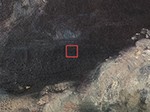
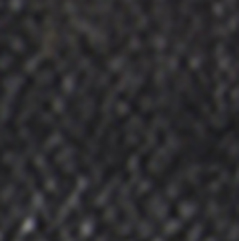
horizontal thread density (13.13 +/- 1.44
threads/cm)
vertical thread density (13.24 +/- 2.09
threads/cm)
horizontal thread angles (90.0 +/- 11.3
degrees)
vertical thread angles (-1.37 +/- 12.2 degrees)
Shooting Rock Canvas Back Horizontal and Vertical Weaves
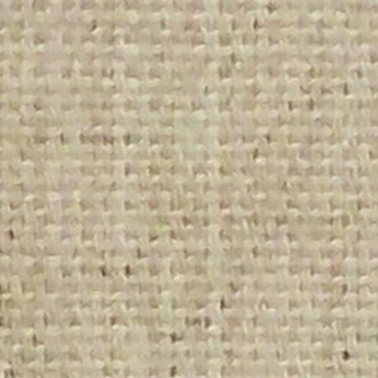
Shooting Rock canvas back shot with illumination straight on showing linear horizontal and vertical weaves.
Yellow Paint Along the Sides
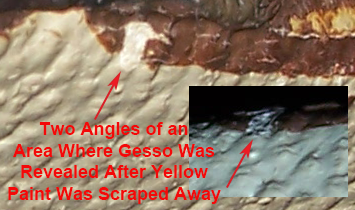 At some point the sides of the painting were covered with yellow
paint. The first photo shows an area of white
where the gesso was revealed by scraping away the yellow. The
low light angle of the inset shows a shadow on the white that
was cast by the yellow layer.
At some point the sides of the painting were covered with yellow
paint. The first photo shows an area of white
where the gesso was revealed by scraping away the yellow. The
low light angle of the inset shows a shadow on the white that
was cast by the yellow layer.
The images below show three of the areas where the yellow paint has rounded from the side and entered the front of the painting. This layer is fairly thick. It is possible the layer has kept the canvas edge from fraying.
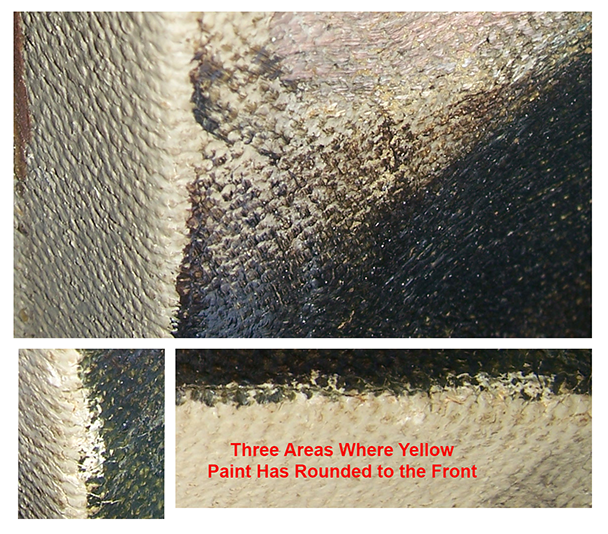
Below, an area where the yellow paint does not completely cover some green paint not seen elsewhere in the painting.

